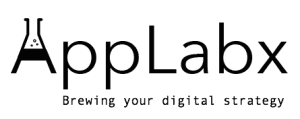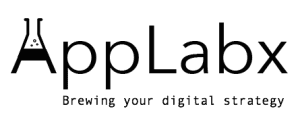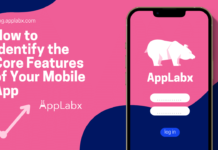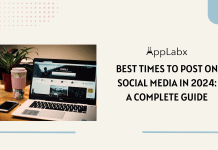Key Takeaways
- Implement a complete Shopify SEO strategy, including technical, on-page, and content optimization, to boost search visibility in 2025.
- Leverage AI-driven tools, structured data, and mobile-first UX to meet evolving search engine standards and user expectations.
- Continuously track performance, avoid common SEO mistakes, and adapt to algorithm updates to maintain top Google rankings.
In today’s fiercely competitive eCommerce environment, simply launching a Shopify store is no longer enough to guarantee success. With millions of online businesses vying for visibility, SEO (Search Engine Optimization) has become the backbone of sustainable growth for Shopify merchants worldwide. As we step into 2025, the dynamics of search have evolved significantly—driven by artificial intelligence, user-centric algorithms, and a mobile-first indexing approach—making it more crucial than ever to follow a strategic, up-to-date SEO checklist tailored for Shopify.
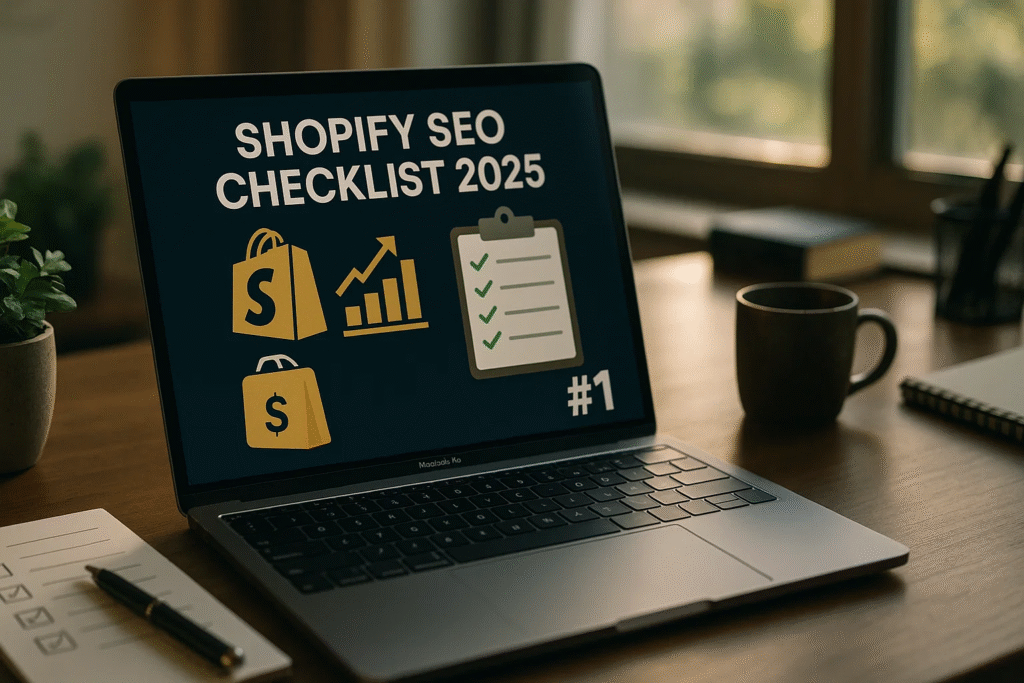
Shopify powers more than 4 million businesses globally and continues to be one of the most popular eCommerce platforms for entrepreneurs, brands, and large-scale retailers alike. Its ease of use, customizable themes, and integrated payment solutions make it an excellent choice for launching and scaling an online store. However, one area where Shopify store owners often fall short is SEO optimization. While Shopify comes with several built-in SEO-friendly features, there are numerous additional steps required to achieve top rankings on Google and other search engines—especially in 2025, when the bar for technical SEO, content quality, and user experience has been raised significantly.
Ranking on the first page of Google is not just a vanity metric—it directly correlates with traffic, conversions, and revenue. Studies show that over 67% of all clicks go to the first five organic search results, and the click-through rate drops dramatically beyond the first page. For Shopify merchants, this means that without a robust SEO strategy, your products and content could remain virtually invisible to your target audience, no matter how great your offerings are.
Moreover, 2025 presents a new set of SEO challenges and opportunities. Google’s algorithm updates have become increasingly sophisticated, emphasizing search intent, page experience, semantic relevance, and structured data. The rise of voice search, AI-generated answers in SERPs, and zero-click results further underscore the need to adapt. To stay ahead, Shopify store owners must align their SEO strategies with these developments, optimize for both humans and search engines, and deliver fast, mobile-friendly, content-rich experiences.
This comprehensive Shopify SEO Checklist for 2025 is designed to help you do exactly that. Whether you’re launching a new Shopify store or looking to refine your existing SEO approach, this guide will walk you through every critical step—from technical configuration and keyword research to content creation, mobile optimization, and beyond. Each section has been carefully curated to reflect the latest best practices and algorithmic trends, ensuring your store has everything it needs to rank higher, attract quality traffic, and convert visitors into loyal customers.
By following this step-by-step checklist, you’ll be equipped with the knowledge and tools to compete effectively in today’s digital marketplace. You’ll not only understand what needs to be done but also why it matters and how to execute it properly on the Shopify platform. This guide isn’t just another generic SEO overview—it’s a detailed action plan tailored specifically for Shopify success in 2025.
Let’s dive into the complete Shopify SEO Checklist and transform your store into a search engine powerhouse.
But, before we venture further, we like to share who we are and what we do.
About AppLabx
From developing a solid marketing plan to creating compelling content, optimizing for search engines, leveraging social media, and utilizing paid advertising, AppLabx offers a comprehensive suite of digital marketing services designed to drive growth and profitability for your business.
AppLabx is well known for helping companies and startups use SEO to drive web traffic to their websites and web apps.
At AppLabx, we understand that no two businesses are alike. That’s why we take a personalized approach to every project, working closely with our clients to understand their unique needs and goals, and developing customized strategies to help them achieve success.
If you need a digital consultation, then send in an inquiry here.
Shopify SEO Checklist 2025: Your Step-by-Step Guide to Ranking #1
- Understanding Shopify SEO in 2025
- Shopify SEO Checklist 2025
- Technical SEO Essentials for Shopify
- On-Page SEO Best Practices
- Keyword Research for Shopify in 2025
- Content Marketing & Blogging for Shopify SEO
- Mobile SEO & UX Optimization
- Structured Data & Schema Markup
- Backlink Strategy for Shopify Stores
- Leveraging Shopify SEO Apps & Tools
- Measuring Shopify SEO Success
- Common Shopify SEO Mistakes to Avoid
- Future-Proofing Your Shopify SEO
1. Understanding Shopify SEO in 2025
Shopify SEO in 2025 has grown far beyond simple keyword insertion and product page optimization. With evolving search engine algorithms, AI-driven ranking factors, and increased user expectations, Shopify store owners must embrace a more strategic and technically advanced approach to search engine optimization. This section explores what makes Shopify SEO unique, the key changes and trends in 2025, and why mastering this discipline is essential for online success.
How Shopify SEO Works: The Foundation
Shopify, as an eCommerce platform, is structured differently from CMS platforms like WordPress or Joomla. It has built-in SEO capabilities, but also some limitations that store owners must address manually.
Built-in Shopify SEO Features:
- Auto-generated sitemap.xml and robots.txt
- Mobile-responsive themes
- Basic meta tag customization for products, collections, and pages
- Canonical URLs to avoid duplicate content (in most cases)
- Built-in SSL certificates for HTTPS support
Limitations Store Owners Should Be Aware Of:
- Restricted access to full URL customization (e.g.,
/collections/,/products/) - Duplicate content issues from product variants and pagination
- Inconsistent control over structured data unless third-party apps are used
- Limited server access for technical SEO enhancements (like modifying
.htaccess)
Key SEO Trends in 2025 That Impact Shopify Stores
1. AI-Powered Search Algorithms
- Google’s Search Generative Experience (SGE) and AI-powered overviews are now common in search results.
- Relevance > Keywords: Search engines focus on semantic context and search intent.
- Shopify sites must deliver informational and transactional content that matches buyer intent at each stage.
Example:
A Shopify store selling fitness supplements should not just rank for “whey protein” but also create supporting content around:
- “Best whey protein for weight loss”
- “How to use whey protein before a workout”
- “Whey protein vs casein: Which is better?”
2. Mobile-First and Core Web Vitals
- Google officially uses mobile-first indexing; your store’s mobile performance is the benchmark.
- Core Web Vitals (Largest Contentful Paint, First Input Delay, Cumulative Layout Shift) now heavily influence rankings.
Performance Optimization Checklist:
| Core Metric | Ideal Score | Shopify Optimization Tools |
|---|---|---|
| Largest Contentful Paint (LCP) | < 2.5 seconds | Compress images, lazy load |
| First Input Delay (FID) | < 100 ms | Use fast Shopify themes |
| Cumulative Layout Shift (CLS) | < 0.1 | Avoid layout shifts, preload fonts |
3. Visual and Voice Search
- 2025 has seen a major shift toward non-textual search, including:
- Google Lens
- Voice assistants like Siri, Alexa, and Google Assistant
- Shopify stores must optimize images with alt-text and descriptive file names.
- Use conversational, natural language in FAQ sections to improve voice search visibility.
Voice Search Example:
Instead of targeting “best ergonomic chair”, optimize for:
- “What is the best ergonomic chair for back pain under $200?”
4. Zero-Click Searches and Featured Snippets
- Shopify stores must optimize for rich results, FAQs, and snippets.
- Add FAQ schema and How-To schema to content and blog posts.
Featured Snippet Optimization Matrix:
| Content Type | Schema Type | Appears In | Shopify Implementation Tool |
|---|---|---|---|
| FAQs | FAQPage Schema | Google Search Panel | Smart SEO, JSON-LD for SEO |
| Product Reviews | Review Schema | Star ratings in SERPs | Judge.me, Loox, Ali Reviews |
| How-To Guides | HowTo Schema | Featured Snippets (step-based) | Manual or app-based injection |
Why Shopify SEO Is Critical in 2025
1. Increasing Cost of Paid Ads
- With higher CPCs on platforms like Google Ads and Facebook, organic SEO becomes a more sustainable acquisition channel.
- SEO delivers compounding ROI—once a page ranks, it can generate traffic for years.
2. Enhanced Search Engine Complexity
- In 2025, search engines evaluate hundreds of signals, including:
- Page experience
- Content freshness
- Topical authority
- Internal linking structure
3. Customer Acquisition in a Crowded Market
- SEO helps Shopify merchants stand out in a saturated market.
- Niche keyword targeting and content marketing can outperform large competitors with bigger budgets.
Shopify SEO vs Traditional SEO: Comparison Matrix
| Factor | Shopify SEO | Traditional SEO (WordPress, etc.) |
|---|---|---|
| Platform Control | Limited (hosted SaaS) | Full control over backend and server settings |
| URL Structure | Semi-customizable | Fully customizable |
| Plugin Flexibility | Fewer SEO apps | Thousands of SEO plugins |
| eCommerce Optimization | Native product, checkout, cart features | Requires integration (e.g., WooCommerce) |
| Scalability | Easily scalable with Shopify Plus | Depends on hosting and CMS limitations |
What’s New in 2025 for Shopify SEO
| Feature / Trend | Description | Action Required |
|---|---|---|
| AI-Powered Product Descriptions | AI tools can auto-generate optimized, unique content | Use tools like Shopify Magic, Jasper, or Writesonic |
| Dynamic Meta Tags | Personalized meta descriptions based on user intent or location | Use Liquid logic with Shopify apps |
| Semantic Keyword Mapping | Grouping keywords by intent and context rather than volume alone | Create topical content hubs, clusters, and internal linking |
| Zero-Click CTR Optimization | Optimize for visibility even without clicks (e.g., snippets, knowledge box) | Add schema, use clear answer boxes and definition-style content |
Conclusion
Understanding Shopify SEO in 2025 means staying ahead of algorithm updates, aligning with user expectations, and using every available tool to increase visibility. With a combination of foundational SEO principles and next-gen strategies like AI-enhanced content, voice search readiness, and Core Web Vitals optimization, Shopify store owners can dominate organic search results.
In the next section, we will break down a full Shopify SEO checklist to help you apply these insights directly to your store—covering everything from technical setup to content strategy, mobile UX, and more.
2. Shopify SEO Checklist 2025
An effective Shopify SEO strategy in 2025 requires a comprehensive, structured approach that covers technical configurations, on-page enhancements, content creation, and performance tracking. This section provides a detailed, SEO-optimized checklist tailored specifically for Shopify store owners, ensuring your site is fully equipped to meet the demands of modern search engine algorithms.
Overview Table: Shopify SEO Checklist 2025
| SEO Area | Key Action Item | Priority | Tools/Apps |
|---|---|---|---|
| Technical SEO | Enable HTTPS and fix URL structure | High | Shopify Settings, SSL Certificate |
| On-Page SEO | Optimize titles, meta descriptions, and headers | High | Smart SEO, Plug in SEO |
| Content Optimization | Build long-form, keyword-rich content | High | Surfer SEO, Ahrefs, ChatGPT |
| Site Performance | Improve Core Web Vitals | High | PageSpeed Insights, TinyIMG |
| Mobile Optimization | Implement responsive, fast-loading design | High | Shopify Themes, Lighthouse |
| Structured Data | Add Schema Markup for products, blogs, and FAQs | Medium | JSON‑LD for SEO, Smart SEO |
| Link Building | Earn backlinks from blogs and influencers | Medium | Ahrefs, BuzzStream |
| Analytics | Set up Google Analytics & GSC | High | GA4, Google Search Console |
1. Technical SEO Checklist
a. Enable SSL and HTTPS
- Ensures data security and search engine trust.
- Shopify includes a free SSL certificate—make sure it’s activated.
- Check: Your site should load as
https://yourdomain.com.
b. Use a Clean URL Structure
- Avoid long or irrelevant URLs.
- Shopify has default paths like
/collections/and/products/—optimize slugs:- Bad:
/products/item1234-best-running-shoe-sale-now - Good:
/products/mens-running-shoes
- Bad:
c. Configure Sitemap.xml and robots.txt
- Shopify auto-generates these files.
- Submit the sitemap.xml to Google Search Console.
- Block unnecessary pages (like cart or login) in robots.txt.
d. Avoid Duplicate Content
- Shopify often duplicates content across:
- Product variants (size, color)
- Collections
- Use canonical tags to signal the preferred version of content.
e. Fix 404 Errors & Set Up Redirects
- Monitor broken links using GSC or Screaming Frog.
- Use Shopify’s built-in 301 redirect manager to handle URL changes.
2. On-Page SEO Checklist
a. Optimize Page Titles and Meta Descriptions
- Include primary keyword within 60 characters for titles, 155 for meta descriptions.
- Use branding and compelling CTAs.
Example:
- Title: “Best Organic Cotton T-Shirts for Men | EcoStyle Apparel”
- Meta: “Shop premium organic cotton t-shirts that combine comfort, sustainability, and style. Free shipping on all orders.”
b. Use Header Tags Properly (H1-H3)
- One H1 per page (usually the product or blog title).
- Use H2 and H3 for sub-topics and features.
c. Optimize Product Descriptions
- Avoid manufacturer copy-paste content.
- Use unique, keyword-rich descriptions with clear value propositions.
- Highlight:
- Use cases
- Benefits
- Specs
d. Use Internal Linking
- Link related products, collections, and blog posts.
- Helps with crawlability and topical relevance.
e. Add Image Alt Text
- Describe images accurately for accessibility and image search.
- Example: Instead of “IMG_123.jpg,” use “white minimalist ceramic vase on shelf.”
3. Keyword Research & Targeting
a. Perform Advanced Keyword Research
- Use tools like Ahrefs, SEMrush, Ubersuggest, or Google Keyword Planner.
- Target a mix of:
- Head terms: “running shoes”
- Long-tail keywords: “best waterproof trail running shoes under $100”
b. Focus on Search Intent
- Map keywords to the right page types:
- Informational → Blog
- Navigational → Homepage or collection
- Transactional → Product pages
c. Build Topic Clusters
- Choose a core keyword and build surrounding content.
Topic Cluster Example:
| Pillar Content | Cluster Articles |
|---|---|
| “Complete Guide to Organic Skincare” | – “Benefits of Organic Vitamin C Serums” – “How to Choose Non-Toxic Moisturizers” – “Top 10 Organic Skincare Brands in 2025” |
4. Content Marketing Strategy
a. Create SEO-Focused Blog Content
- Publish long-form blog posts (1,500–2,500 words) targeting high-intent keywords.
- Use FAQ sections to capture People Also Ask and featured snippet opportunities.
b. Refresh and Update Old Content
- Update dates, stats, links, and optimize headers every 6–12 months.
c. Add Video and Rich Media
- Improves dwell time and engagement.
- Embed product demos, reviews, or tutorials directly on product and blog pages.
5. Mobile SEO & UX Optimization
a. Choose a Responsive Shopify Theme
- Themes like Debut, Dawn, or Prestige are optimized for mobile.
b. Improve Core Web Vitals (CWV)
Core Web Vitals Scorecard (Ideal Thresholds):
| Metric | Ideal Value | Optimization Tips |
|---|---|---|
| Largest Contentful Paint (LCP) | < 2.5s | Compress images, preload hero content |
| First Input Delay (FID) | < 100ms | Minimize third-party scripts |
| Cumulative Layout Shift (CLS) | < 0.1 | Set image dimensions, avoid late loads |
c. Reduce Load Time
- Compress all images with tools like TinyIMG or Crush.pics.
- Minify JavaScript and CSS using theme optimization apps.
6. Structured Data & Schema Markup
a. Implement Product Schema
- Use schema to display:
- Price
- Availability
- Rating
Shopify App Suggestion: JSON-LD for SEO
b. Add FAQ and Article Schema
- Improves chances of ranking in rich snippets and People Also Ask.
c. Use Breadcrumb Schema
- Enhances SERP display and improves navigation.
7. Backlink Strategy for Shopify Stores
a. Acquire Quality Backlinks
- Reach out to:
- Industry bloggers
- Review sites
- Product roundups
b. Submit to Directories
- Target niche and local directories relevant to your business.
c. Guest Blogging & Partnerships
- Write guest posts on high-authority blogs to drive referral traffic and backlinks.
8. Shopify SEO Tools and Apps You Should Use
| Tool/App | Purpose | Free/Paid | Key Feature |
|---|---|---|---|
| Smart SEO | Meta tags, alt text, JSON-LD | Paid | Bulk editing, automated meta templates |
| Plug in SEO | SEO audits and recommendations | Free/Paid | Fix common issues automatically |
| TinyIMG | Image optimization | Paid | Compress and lazy load images |
| SEO Manager | On-page SEO control | Paid | Keyword suggestions, search previews |
| JSON-LD for SEO | Structured data markup | Paid | Supports product, article, FAQ schema |
9. Analytics & Monitoring
a. Set Up Google Search Console
- Track indexing status, crawl errors, and keyword performance.
b. Set Up Google Analytics 4
- Monitor:
- Organic traffic
- Conversion goals
- Bounce rate
c. Use Shopify Analytics Dashboard
- Monitor top landing pages, referral sources, and device types.
d. Track SEO KPIs
Key SEO Metrics to Track:
| Metric | Description |
|---|---|
| Organic Traffic | Monthly visitors from search engines |
| Keyword Rankings | Positions for your target keywords |
| Bounce Rate | % of users leaving without interaction |
| Conversion Rate | % of visitors completing desired action |
| Backlinks | Quantity and quality of referring domains |
Conclusion
The Shopify SEO Checklist for 2025 is your roadmap to sustainable, long-term eCommerce growth. It goes far beyond surface-level optimization and delves into the strategic, technical, and content-related aspects that modern search engines expect. By systematically addressing each item on this list—supported by data, apps, and proven techniques—your store can rise above competitors, generate consistent organic traffic, and drive more sales.
3. Technical SEO Essentials for Shopify
Technical SEO forms the foundation of a successful Shopify SEO strategy. In 2025, with evolving search engine algorithms and an increased focus on user experience, technical SEO is no longer optional — it is essential for crawling, indexing, performance, and ultimately, rankings. This section breaks down every critical technical SEO component specific to Shopify stores, complete with actionable tips, tools, and examples.
1. Secure Your Store with HTTPS
Why It Matters
- Google treats HTTPS as a ranking signal.
- A secure store builds trust with users and prevents browser warnings.
Shopify Implementation
- Shopify provides a free SSL certificate automatically.
- Ensure the secure version (
https://) is forced across all pages.
Checkpoints
- All internal links should use HTTPS.
- Redirect all HTTP pages to HTTPS with 301 redirects.
- Use canonical tags to reflect the HTTPS version.
2. Optimize URL Structure and Canonicals
Shopify’s URL Constraints
- Shopify enforces default paths:
- Products:
/products/ - Collections:
/collections/
- Products:
- These are not removable, but slugs can be optimized.
Best Practices for URLs
- Keep URLs short, descriptive, and keyword-rich.
- Use hyphens instead of underscores.
- Avoid stop words (e.g., “the”, “and”, “of”) unless needed for clarity.
Canonical Tag Optimization
- Shopify auto-generates canonical tags.
- Ensure duplicate product pages (such as those found in multiple collections) point to the primary product URL.
Example:
<link rel="canonical" href="https://yourstore.com/products/natural-face-serum" />
3. Leverage Sitemap.xml and robots.txt
Sitemap.xml Optimization
- Shopify auto-generates
sitemap.xml. - Submit it to Google Search Console and Bing Webmaster Tools.
Sitemap Tip:
- Validate the sitemap using tools like Screaming Frog or XML-Sitemaps.
robots.txt Customization
- Shopify allows basic customization of
robots.txtvia the theme editor. - Block pages that should not be indexed:
/cart/checkout/account
Sample robots.txt Additions:
Disallow: /cart
Disallow: /checkout
Disallow: /account
4. Fix Crawl Errors and Broken Links
Crawlability Tips
- Use Google Search Console to identify:
- 404 errors
- Crawl anomalies
- Indexation issues
Redirect Manager
- Shopify includes a built-in 301 redirect tool.
- Always redirect deleted or renamed pages to relevant alternatives.
Common Redirect Scenarios:
| Old URL | New URL |
|---|---|
/products/blue-shirt-sale | /products/blue-shirt |
/collections/summer-2023 | /collections/summer-2025 |
Tools to Use
- Screaming Frog SEO Spider (desktop)
- Ahrefs Site Audit
- Shopify Admin Redirects Panel
5. Mobile-First Optimization
Why It’s Critical
- Google uses mobile-first indexing for all websites.
- Over 70% of eCommerce traffic comes from mobile devices.
Shopify Mobile Optimization Tips
- Choose a responsive theme (e.g., Dawn, Prestige, Booster).
- Test your site with Google’s Mobile-Friendly Test.
- Avoid intrusive pop-ups and slow-loading elements.
Mobile Speed Score Matrix (Google Lighthouse):
| Score Range | Interpretation | Action |
|---|---|---|
| 90–100 | Excellent | Maintain performance |
| 50–89 | Needs improvement | Compress images, optimize JavaScript |
| <50 | Poor | Redesign or change theme |
6. Improve Core Web Vitals
Core Web Vitals are essential user experience metrics that Google uses as ranking factors.
Metrics and Benchmarks
| Metric | Description | Good Threshold |
|---|---|---|
| Largest Contentful Paint (LCP) | Time for main content to load | Under 2.5 seconds |
| First Input Delay (FID) | Time before user can interact | Under 100 ms |
| Cumulative Layout Shift (CLS) | Visual stability during page load | Under 0.1 |
Shopify Optimization Actions
- LCP: Preload hero images, minimize server response time.
- FID: Defer or remove unused JavaScript.
- CLS: Define fixed dimensions for images and ads.
Tools to Monitor CWV
- Google PageSpeed Insights
- Web.dev Measure
- Lighthouse in Chrome DevTools
7. Image Optimization
Key Considerations
- Images affect both load time and SEO.
- Shopify does not auto-optimize images — manual steps are required.
Best Practices
- Use next-gen formats like WebP or AVIF.
- Compress images using tools:
- TinyIMG
- Crush.pics
- Add descriptive file names and alt attributes for SEO.
Alt Text Example:
- Good:
alt="handcrafted ceramic coffee mug with wooden handle" - Bad:
alt="image123.jpg"
8. Use Structured Data (Schema Markup)
Structured data helps search engines understand your content better and enables rich results in SERPs.
Types of Schema to Use
| Schema Type | Purpose | Applies To |
|---|---|---|
| Product | Shows price, availability, rating | Product Pages |
| Review | Displays star ratings | Product & Collection Pages |
| FAQPage | Shows collapsible answers in SERPs | Blog or Help Pages |
| Article | Enhances blog post visibility | Blog Posts |
Implementation Tools
- JSON-LD for SEO by Ilana Davis
- Smart SEO
- Manual insertion via Liquid template files (advanced)
9. Site Architecture & Internal Linking
Shopify Navigation Tips
- Keep structure flat and clean (3-click rule).
- Recommended URL depth: 2–3 levels max.
Ideal Shopify Site Structure:
Homepage
├── Collections
│ ├── Product Pages
├── Blog
│ ├── Blog Posts
Internal Linking Tips
- Link from product descriptions to related blog posts.
- Use breadcrumbs for easy navigation and crawlability.
- Add related products or upsells in product pages.
10. Monitor Indexing and Crawl Stats
Tools to Use
- Google Search Console
- Coverage Report
- Index Status
- Crawl Stats
- Bing Webmaster Tools
- Index Explorer
- SEO Reports
Best Practices
- Monitor for:
- “Discovered – not indexed” issues
- Duplicate content flags
- Sudden drops in indexed URLs
Technical SEO Audit Matrix for Shopify (2025)
| Area | Issue | Solution | Tool |
|---|---|---|---|
| HTTPS | HTTP pages still accessible | Force HTTPS, update internal links | Shopify Settings |
| URL Structure | Long/unfriendly slugs | Optimize slugs manually | Shopify Admin |
| Canonical Tags | Duplicate product URLs | Use canonical tags correctly | Inspect via HTML |
| Sitemap | Pages not indexed | Submit sitemap to GSC | Google Search Console |
| Core Web Vitals | Poor LCP and CLS | Optimize images, define dimensions | PageSpeed Insights |
| Robots.txt | Important pages blocked | Audit and manually adjust if needed | Screaming Frog |
| Mobile UX | Slow mobile pages | Use responsive themes, compress assets | Lighthouse |
| Image Optimization | Large file sizes | Compress and convert to WebP | TinyIMG |
| Structured Data | Missing schema for products | Install JSON-LD for SEO app | Rich Results Test |
| Crawl Errors | 404s and broken links | Fix with 301 redirects | GSC + Ahrefs |
Conclusion
Technical SEO is the silent engine behind high-performing Shopify stores. In 2025, its importance is magnified by Google’s evolving algorithmic preferences, mobile-first indexing, and user-experience-based ranking signals. From URL structure and canonical management to Core Web Vitals and schema markup, every technical detail contributes to crawlability, indexability, and ultimately, visibility.
4. On-Page SEO Best Practices
On-page SEO is the art and science of optimizing individual pages to rank higher and earn more relevant traffic from search engines. In Shopify, on-page SEO plays a critical role in enhancing visibility across product pages, collections, blogs, and static pages like About or Contact. This section details the most advanced and effective on-page SEO practices tailored specifically for Shopify in 2025.
1. Optimize Title Tags for Clicks and Keywords
Best Practices for Title Tags
- Include primary keywords near the beginning of the title.
- Keep length under 60 characters to avoid truncation in SERPs.
- Add unique selling points (USPs) to encourage clicks.
Examples of Effective Title Tags
| Page Type | Sample Title Tag |
|---|---|
| Product Page | Organic Matcha Green Tea Powder – 100g |
| Collection | Eco-Friendly Kitchen Essentials |
| Blog Post | 10 Shopify SEO Tips for 2025 |
2. Write Compelling Meta Descriptions
Guidelines for Meta Descriptions
- Aim for 150–160 characters.
- Use action-oriented language and include a call-to-action (CTA).
- Integrate the primary keyword naturally.
- Ensure each page has a unique description.
Example Meta Description:
“Explore our handcrafted bamboo cutlery sets — sustainable, stylish, and plastic-free. Order now for free worldwide shipping.”
3. Use Header Tags (H1–H6) Strategically
Header Tag Hierarchy
- H1: One per page; should include the main keyword.
- H2–H4: Use to structure content logically, especially for long-form pages and blog posts.
Shopify-Specific Tips
- In Shopify themes, the product title is typically H1 by default.
- Add H2s to product descriptions for clarity (e.g., Features, Benefits, Shipping Info).
4. Create Unique and Keyword-Rich Product Descriptions
Why It Matters
- Google penalizes duplicate content.
- Most Shopify merchants copy-paste manufacturer descriptions — avoid this.
Writing Guidelines
- Use primary and secondary keywords naturally.
- Focus on user intent — answer potential buyer questions.
- Highlight features and benefits clearly.
Structure for Product Descriptions
| Section | Content Ideas |
|---|---|
| Intro Paragraph | Highlight product’s unique value and keyword |
| Features | Bullet points (material, size, color, usage) |
| Benefits | Why it’s better than alternatives |
| CTA | “Buy now,” “Add to cart,” or “Free shipping” |
5. Use Image Alt Text Effectively
Purpose of Alt Text
- Improves image SEO.
- Ensures accessibility.
- Helps with Google Image Search traffic.
Alt Text Tips
- Describe the image accurately using targeted keywords.
- Avoid keyword stuffing.
- Don’t use terms like “image of” or “photo of.”
Examples:
- Good:
alt="handmade ceramic coffee mug with blue glaze" - Poor:
alt="image1"
6. Internal Linking for SEO and UX
Internal Linking Strategies
- Link between related products (e.g., “You may also like”).
- Cross-link blogs and product pages (e.g., “Learn how to use this product”).
- Use descriptive anchor text (not just “click here”).
Shopify Example:
In a blog post about eco-friendly living:
“Explore our reusable kitchen towels that reduce single-use waste.”
7. Use Structured Content Formats (Tables, Lists, FAQs)
Benefits
- Enhances readability and user engagement.
- Increases chances of featured snippets in search results.
Table Example: Product Comparison Table
| Feature | Product A | Product B |
|---|---|---|
| Material | Organic Cotton | Recycled Polyester |
| Price | $25 | $19 |
| Machine Washable | Yes | Yes |
| Available Colors | White, Blue, Green | Black, Grey |
FAQ Schema
Use collapsible FAQ sections:
- Q: Is this product dishwasher-safe?
- A: Yes, all our glass containers are dishwasher-safe and BPA-free.
- Q: Do you offer international shipping?
- A: Yes, we ship to over 100 countries worldwide.
8. Optimize Collection Pages for SEO
Why It’s Important
- Collection pages often rank for broad search terms.
- Great for targeting category-level keywords.
Optimization Tips
- Write a unique, keyword-optimized collection description.
- Include H2 headers and internal links.
- Add FAQ sections below product listings.
Example:
For a collection of hiking boots:
“Shop our premium collection of waterproof hiking boots for men and women. Engineered for durability and all-terrain comfort.”
9. SEO-Friendly URL Slugs
Best Practices
- Keep URLs short and keyword-focused.
- Use hyphens (not underscores).
- Avoid unnecessary words and special characters.
Examples:
- Good:
/collections/hiking-boots - Bad:
/collections/all-products-hiking_boots?ref=123
10. Content Depth and Topical Relevance
How It Helps
- Pages with in-depth content perform better in 2025.
- Shopify merchants should aim for rich, informative pages with multimedia, FAQs, and related links.
Content Expansion Ideas
- Add buyer guides, comparison charts, and usage instructions.
- Include video content hosted via YouTube or embedded in Shopify.
11. Implement Blog SEO for Shopify
Why Blogging Still Works
- Drives organic traffic for non-commercial keywords.
- Helps build topical authority.
Blog Optimization Tips
- Target long-tail keywords (e.g., “how to clean cast iron skillets”).
- Add internal links to product pages.
- Include structured data (
Article,FAQPage). - Use clear H1, H2, and H3 headings.
12. Content Engagement Metrics to Monitor
| Metric | Why It Matters | Target Benchmarks |
|---|---|---|
| Bounce Rate | Lower bounce = higher engagement | Under 50% |
| Time on Page | Indicates content quality | Over 1.5 minutes |
| Scroll Depth | Shows if users read entire content | Over 75% ideal |
| Click-Through Rate (CTR) | Influences SEO indirectly | 3–5% or higher in SERPs |
Use tools like:
- Google Analytics 4 (GA4)
- Hotjar / Microsoft Clarity
- Shopify Analytics
On-Page SEO Checklist Matrix for Shopify (2025)
| Area | Optimization Task | Shopify-Specific Action | Tools/Apps |
|---|---|---|---|
| Title Tags | Add keyword-rich, click-worthy titles | Edit via Shopify Admin > Products | Ahrefs, SEMrush |
| Meta Descriptions | Write unique CTAs with keywords | Customize for every product & blog page | Yoast App, Smart SEO |
| H1 and Header Tags | Maintain one H1, use H2–H4 hierarchy | Use HTML editor in product description | Inspect in Chrome DevTools |
| Product Descriptions | Add detailed, original content | Avoid manufacturer copy-paste | Shopify Admin |
| Alt Text for Images | Describe images accurately | Edit via Media Library | TinyIMG, Crush.pics |
| Internal Linking | Use anchor text and product/blog linking | Use Shopify sections or Liquid templates | Screaming Frog, GSC |
| Collection Descriptions | Add optimized content and FAQ | Use collection editor | Smart SEO |
| Blog Optimization | Target informational queries | Publish on Shopify Blog | Google Keyword Planner, Clearscope |
| Structured Content | Add tables, FAQs, and lists | Use Liquid + JSON-LD apps | Rich Results Test |
Conclusion
On-page SEO is the engine that drives product discovery, customer engagement, and ultimately, conversions on your Shopify store. By mastering meta elements, content formatting, internal linking, and semantic markup, Shopify merchants can dominate both informational and transactional queries in 2025. These best practices are not just technical tasks but strategic levers for increasing visibility, traffic, and revenue.
5. Keyword Research for Shopify in 2025
Keyword research remains the cornerstone of every successful Shopify SEO strategy in 2025. With Google’s algorithm prioritizing user intent and semantic understanding more than ever, Shopify merchants must go beyond simple keywords and uncover high-converting, low-competition, and intent-driven search terms. In this section, we explore how to conduct advanced keyword research tailored for Shopify eCommerce stores and how to apply findings effectively.
1. Understanding the Role of Keyword Research in eCommerce SEO
Why It Matters in 2025
- Helps attract qualified traffic with strong purchase intent.
- Supports content planning for product pages, blog posts, and collections.
- Improves ad performance (Google Ads, Shopping, Meta Ads).
- Informs internal linking and URL structure.
Key Shopify Areas Requiring Keyword Optimization:
- Product titles and descriptions
- Collection page content
- Blog articles and FAQs
- Image alt texts
- Meta titles and descriptions
2. Types of Keywords to Target in Shopify Stores
Keyword Categories Explained
| Keyword Type | Description | Example |
|---|---|---|
| Short-Tail Keywords | 1-2 word, high-volume, low-conversion | “running shoes” |
| Long-Tail Keywords | 3+ words, lower competition, higher intent | “best waterproof trail running shoes for men” |
| Branded Keywords | Contain your brand or product name | “Nike Air Zoom Pegasus 2025” |
| Informational | Targeted for blog content | “how to clean suede sneakers” |
| Commercial | Investigative queries before buying | “top hiking boots under $100” |
| Transactional | Strong buying intent | “buy leather wallet online USA” |
| Local Keywords | Combine product + location | “organic tea Singapore” |
Shopify SEO Pro Tip
- Focus on long-tail and transactional keywords for product and collection pages.
- Use informational keywords to fuel blog content and drive top-of-funnel traffic.
3. Tools for Keyword Research in 2025
Recommended Tools and Their Key Features
| Tool | Key Features | Best Use Case |
|---|---|---|
| Google Keyword Planner | Free, PPC data, broad match terms | Initial keyword discovery |
| Ahrefs | Keyword gaps, difficulty scores, trends | Competitor keyword mining |
| SEMrush | Position tracking, search intent analysis | SERP feature tracking and competitive analysis |
| Ubersuggest | Long-tail suggestions and keyword clustering | Low-cost alternative for beginners |
| Keywords Everywhere | Chrome extension, shows SERP volume and CPC | On-the-fly research while browsing Google |
| Surfer SEO | NLP-driven keyword suggestions for content writing | Optimizing blog and collection content |
| AnswerThePublic | Visualizes questions and queries around a keyword | Blog and FAQ content ideation |
4. Step-by-Step Shopify Keyword Research Process
Step 1: Identify Your Core Products and Services
- List all products, categories, and niches.
- Example: If selling eco-friendly homeware:
- Products: Bamboo cutlery, biodegradable trash bags, beeswax wraps
- Collections: Kitchen, Bathroom, Travel Essentials
Step 2: Start with Broad Keyword Discovery
- Use tools to identify seed keywords:
- “eco kitchen items”
- “sustainable home products”
- Expand using modifiers:
- Buy, best, top, affordable, near me, in stock
Step 3: Analyze Keyword Metrics
- Use metrics to prioritize keywords:
- Search Volume (SV): How many searches per month
- Keyword Difficulty (KD): How competitive the term is
- Cost Per Click (CPC): Value of the term in paid search
- Click-Through Rate (CTR): How often users click from SERPs
| Keyword | SV | KD | CPC | Intent |
|---|---|---|---|---|
| bamboo cutlery set | 3,600 | 25 | $1.30 | Transactional |
| sustainable kitchen tools | 1,000 | 32 | $0.95 | Commercial |
| how to store beeswax wraps | 320 | 9 | $0.50 | Informational |
Step 4: Map Keywords to Shopify Pages
- Product Pages: Transactional keywords
- Collection Pages: Category-focused commercial keywords
- Blog Posts: Informational and long-tail keywords
- FAQs and Help Pages: Question-based search terms
5. Keyword Intent Matrix for Shopify
| Intent Type | Buyer Stage | Keyword Example | Shopify Page Type |
|---|---|---|---|
| Informational | Awareness | “how to clean reusable straws” | Blog |
| Commercial | Consideration | “best eco-friendly kitchen utensils” | Collection Page |
| Transactional | Decision | “buy reusable silicone bags online” | Product Page |
| Navigational | Post-purchase | “Order tracking GreenEarth Store” | Order/Account Page |
6. Competitor Keyword Gap Analysis
How to Perform It
- Identify top 3–5 Shopify competitors in your niche.
- Use Ahrefs or SEMrush to extract:
- Keywords they rank for but you don’t.
- Pages generating the most organic traffic.
Example Analysis Output:
| Competitor URL | Ranking Keyword | Position | Monthly Traffic |
|---|---|---|---|
| /collections/sustainable-kitchen | “eco kitchen essentials” | #2 | 1,100 |
| /products/bamboo-toothbrush-pack | “buy bamboo toothbrush” | #5 | 850 |
| /blogs/green-living-cleaning-guide | “natural cleaning tips” | #3 | 1,200 |
Use these insights to:
- Build new product or collection pages
- Update blog content with proven keyword themes
- Match user search intent better
7. Cluster Keywords for Semantic Optimization
What is Keyword Clustering?
- Grouping related keywords into content themes.
- Helps create pillar pages and supporting content.
Shopify Keyword Cluster Example: “Reusable Shopping Bags”
| Cluster Topic | Keywords |
|---|---|
| Main Product Page | reusable shopping bags, eco grocery bags, foldable shopping totes |
| Blog Topic 1 | why reusable bags are better than plastic |
| Blog Topic 2 | how to clean reusable shopping bags |
| Comparison Guide | best reusable bags for groceries vs travel |
Benefit:
- Improves topical authority in Google’s eyes.
- Boosts internal linking opportunities and time on site.
8. Leverage Google Trends and Seasonality
Why It’s Important
- Understand how demand changes throughout the year.
- Plan inventory, promotions, and content calendars accordingly.
Example: Seasonal Spike for “Reusable Gift Wrap”
| Month | Interest Level (Google Trends) |
|---|---|
| January | 20 |
| April | 35 |
| November | 80 |
| December | 100 |
Action Steps
- Launch holiday campaigns early (October–November).
- Update product pages with seasonal modifiers (e.g., “eco Christmas wrap”).
9. Track Keyword Performance and Rankings
Tools to Use
- Google Search Console: Monitor impressions, clicks, average position.
- SEMrush/Ahrefs: Rank tracking, keyword trends, visibility reports.
- Shopify Analytics: Identify products/pages driving organic traffic.
Performance KPIs to Monitor
| Metric | Target / Goal |
|---|---|
| Organic Traffic Growth | 10–30% increase per quarter |
| Keyword Ranking Changes | Increase in top 3 and top 10 positions |
| CTR from SERPs | Maintain >3% for key pages |
| Revenue from Organic | Growing % share of total store revenue |
Conclusion
In 2025, keyword research is more than just plugging terms into tools — it’s about understanding customer intent, tracking behavioral trends, and creating an optimized content ecosystem that serves both users and search engines. Shopify store owners who invest in thorough keyword discovery, semantic clustering, and performance analysis will not only rank higher but also convert better.
6. Content Marketing & Blogging for Shopify SEO
In the increasingly competitive world of eCommerce, content marketing is no longer optional—it is a strategic necessity. Shopify stores that consistently publish relevant, keyword-targeted, and engaging blog content significantly outperform those that don’t. Content not only helps attract organic traffic but also nurtures prospects through the buyer journey, improves domain authority, and supports long-tail keyword visibility.
This section explores how Shopify merchants in 2025 can implement a robust content marketing and blogging strategy for SEO success, complete with frameworks, examples, and data-driven approaches.
1. Why Content Marketing Matters for Shopify SEO
Direct SEO Benefits:
- Expands keyword footprint beyond product and collection pages.
- Improves topical authority and semantic relevance in Google’s eyes.
- Increases dwell time, engagement, and backlink opportunities.
- Supports internal linking and improves crawlability.
Indirect Business Benefits:
- Educates customers about product use, benefits, and differentiators.
- Establishes brand thought leadership.
- Nurtures leads and increases customer lifetime value.
2. Key Content Types That Drive Shopify SEO in 2025
| Content Type | Purpose | Example Title |
|---|---|---|
| Blog Articles | Attract top- and mid-funnel traffic | “Top 10 Vegan Skincare Ingredients for 2025” |
| Product Use Guides | Educate and reduce post-sale churn | “How to Use Reusable Beeswax Wraps for Maximum Freshness” |
| Comparison Posts | Influence purchase decisions | “Cotton vs Bamboo Towels: Which is More Sustainable?” |
| How-To Articles | Target informational search queries | “How to Build a Minimalist Capsule Wardrobe” |
| Gift Guides | Seasonal and promotional traffic | “Eco-Friendly Holiday Gifts Under $50” |
| Case Studies & Reviews | Build credibility and drive conversions | “Why 10,000+ Customers Switched to Our Organic Bedding” |
| FAQ/Answer Posts | Capture long-tail and voice search | “What is the Best Way to Store Natural Soap Bars?” |
3. Blogging Strategy Framework for Shopify SEO
Step-by-Step Workflow
Step 1: Define Content Goals
- Increase organic traffic
- Improve conversions
- Build backlinks
- Educate customers
Step 2: Conduct Keyword Research
- Use tools like Ahrefs, SEMrush, Google Search Console
- Cluster keywords by intent and product relevance
Step 3: Map Blog Topics to Funnel Stages
| Funnel Stage | Content Format | Sample Title |
|---|---|---|
| Awareness | Informational Blogs | “Why Bamboo Products Are Taking Over in 2025” |
| Consideration | Comparison Guides | “Top 5 Eco Toothbrushes Compared” |
| Decision | Product Use Guides | “How to Use Our Zero-Waste Laundry Sheets” |
| Retention | Customer Stories | “How Our Customers Saved $500/Year on Waste” |
Step 4: Schedule and Publish Content
- Use content calendars (monthly or quarterly)
- Maintain consistency (1–4 posts/month)
Step 5: Optimize and Promote
- SEO-optimize posts: meta tags, internal links, schema
- Promote via email, social media, and influencers
4. Blog Optimization Best Practices for Shopify SEO
On-Page SEO Checklist for Blog Posts
- Primary keyword in the title and H1 tag
- URL slugs contain short, descriptive keywords
- Use H2s and H3s with secondary keywords
- Add internal links to product and collection pages
- Include external authoritative sources
- Optimize meta titles and descriptions
- Include alt text for images
Example Blog Post Optimization Table
| Element | Optimized Example |
|---|---|
| Title Tag | “10 Eco-Friendly Bathroom Swaps for 2025” |
| URL Slug | /blog/eco-friendly-bathroom-swaps-2025 |
| H1 Tag | “Eco-Friendly Bathroom Swaps to Make in 2025” |
| Meta Description | “Discover sustainable bathroom products to help you save money and the planet. Read our top 10 picks for 2025.” |
| Internal Link | Link to: /collections/bathroom |
| Image Alt Tag | “Reusable cotton makeup pads in bamboo box” |
5. Evergreen vs. Seasonal Content Planning
Evergreen Content
- Remains relevant year-round
- Drives consistent traffic over time
Examples:
- “How to Wash Organic Cotton Sheets”
- “Benefits of Using Compostable Trash Bags”
Seasonal Content
- Capitalizes on holidays, events, and trends
- Can go viral or attract high-volume traffic short term
Examples:
- “Sustainable Valentine’s Day Gift Ideas”
- “Top Earth Day Products for Eco-Conscious Shoppers”
Content Planning Calendar (Sample 6-Month Plan)
| Month | Content Type | Blog Topic Example |
|---|---|---|
| January | New Year Resolutions | “Zero Waste Resolutions for 2025” |
| February | Valentine’s Day Gift Guide | “Eco-Friendly Valentine’s Gifts for Couples” |
| March | Spring Cleaning Tips | “Natural Cleaning Essentials for Spring 2025” |
| April | Earth Day | “25 Ways to Go Green This Earth Day” |
| May | Travel Season | “Top 10 Zero-Waste Travel Essentials” |
| June | Summer Lifestyle | “How to Stay Cool with Sustainable Linen Clothing” |
6. Internal Linking for Shopify SEO Blog Posts
Key Rules:
- Link to related product pages using anchor text
- Use category keywords to link to collection pages
- Ensure every post has 2–5 internal links
- Use clear CTAs like:
- “Explore our organic skincare line”
- “Shop the full bamboo bathroom collection”
Internal Linking Matrix
| Blog Post Title | Links To Product Pages | Links to Collection Pages |
|---|---|---|
| “How to Reduce Plastic in the Kitchen” | Beeswax wraps, Reusable zip bags | Kitchen Essentials |
| “Benefits of Eco Toothbrushes” | Bamboo toothbrush, Toothbrush holder set | Dental Care |
| “Best Zero-Waste Travel Accessories” | Travel soap case, Collapsible water bottle | Travel Products |
7. Using AI to Scale Shopify Blog Content in 2025
Benefits of AI in Content Creation
- Accelerates blog production
- Helps generate content outlines and FAQs
- Improves consistency and tone
- Allows content personalization at scale
Tools to Consider:
- Jasper.ai – Blog post drafts, meta tags
- Surfer SEO – On-page optimization suggestions
- Copy.ai – Social captions and product descriptions
- ChatGPT + SEO plugins – Custom long-form content generation
AI + Human Collaboration Workflow
- Use AI to generate outlines and first drafts
- Human editor refines tone, voice, and accuracy
- Run final SEO audits (meta tags, keyword usage, links)
8. Measuring Blog Performance and ROI
Key Performance Metrics
| Metric | Description | Ideal Benchmark |
|---|---|---|
| Organic Traffic | Visitors from search engines | Increasing 10–25% per quarter |
| Average Time on Page | Engagement indicator | >2 minutes |
| Bounce Rate | % who leave without interacting | <50% |
| Conversion Rate | Leads or sales from blog visitors | 1–3% for mid-funnel content |
| Backlinks Generated | Authority-building links to your content | 2+ per post over time |
| Social Shares/Engagement | Indicates reach and brand awareness | Varies by niche and audience |
Tools for Blog Performance
- Google Analytics 4: Engagement and goal tracking
- Google Search Console: Keyword and click data
- Ahrefs/Semrush: Backlink analysis, keyword trends
- Hotjar: Heatmaps and behavior analysis
Conclusion
In 2025, Shopify stores that excel in content marketing and blogging will not only win more traffic but also dominate their niches. With AI tools, structured planning, and a deep understanding of user intent, brands can build scalable, keyword-rich content ecosystems that convert. Content is no longer just a marketing tool—it’s a core SEO and revenue-driving asset.
7. Mobile SEO & UX Optimization
With over 70% of eCommerce traffic originating from mobile devices in 2025, optimizing for mobile SEO and user experience (UX) is a top priority for Shopify merchants. Google’s mobile-first indexing, coupled with evolving user expectations for speed, ease of navigation, and intuitive design, means mobile optimization is no longer optional—it directly impacts visibility, rankings, and conversions.
This comprehensive section outlines how to implement a high-performance mobile SEO and UX strategy on Shopify, incorporating best practices, relevant examples, tables, and data-backed frameworks.
1. The Importance of Mobile SEO in 2025
Why Mobile SEO Is Critical
- Mobile-first indexing: Google uses the mobile version of your site for ranking and indexing.
- Mobile traffic dominance: Most Shopify visitors shop via smartphones.
- Mobile UX influences bounce rate, time on site, and conversion rate—core Web Vitals metrics.
Impact of Mobile SEO on Shopify Performance
| Factor | Impact on Mobile SEO | Effect on Shopify Metrics |
|---|---|---|
| Page Speed | Affects ranking and bounce rate | Higher speed = better conversion |
| Responsive Design | Ensures usability across devices | Improves retention and engagement |
| Mobile Navigation | Reduces friction and bounce | Boosts time on site and conversions |
| Mobile-Optimized Content | Enhances readability and engagement | Increases SEO visibility and linkability |
| Core Web Vitals | Direct Google ranking signals | Higher rankings, especially on mobile |
2. Mobile UX Principles for Shopify Stores
Core UX Principles to Apply
- Thumb-Friendly Navigation
- Ensure buttons and CTAs are easily clickable
- Avoid placing links too close together
- Example: Use a “Buy Now” button with at least 48px height
- Minimize User Effort
- Reduce form fields at checkout
- Enable guest checkout options
- Use autocomplete in address fields
- Prioritize Load Speed
- Optimize image sizes and formats (e.g., WebP)
- Implement lazy loading
- Minimize JavaScript and CSS render-blocking
- Avoid Intrusive Interstitials
- Avoid pop-ups that block main content on mobile
- Use non-intrusive banners (e.g., cookie disclaimers at the bottom)
3. Responsive Design and Mobile Layouts
Shopify Themes Best Suited for Mobile UX
| Theme Name | Key Mobile Features | Ideal For |
|---|---|---|
| Dawn | Minimalist design, fast, mobile-first layout | General stores, D2C brands |
| Sense | Strong storytelling, content blocks for mobile | Wellness, health, lifestyle brands |
| Ride | Bold visuals, large tap targets | Sports, fashion, high-impact products |
| Taste | Designed for short-form content and readability | Food, beverage, skincare |
Best Practices
- Use fluid grids and flexible images
- Make font size at least 16px for readability
- Avoid fixed-width elements that break on small screens
4. Core Web Vitals for Mobile SEO
Core Web Vitals Metrics
| Metric | Definition | Google’s Ideal Benchmark |
|---|---|---|
| Largest Contentful Paint (LCP) | Time to load the largest visible element | Under 2.5 seconds |
| First Input Delay (FID) | Time before a user can interact with the site | Under 100ms |
| Cumulative Layout Shift (CLS) | Visual stability; preventing unexpected movement | Less than 0.1 |
How to Optimize These Metrics on Shopify
- Improve LCP
- Optimize hero images
- Use fast Shopify themes like Dawn
- Reduce FID
- Minimize third-party JavaScript
- Defer non-critical scripts
- Lower CLS
- Set dimensions for all media (images, iframes)
- Avoid inserting content above existing content
5. Mobile Keyword Optimization
Best Practices for Mobile Keyword Targeting
- Target shorter and conversational queries
- Example: “Best running shoes 2025” vs “High-performance running footwear with gel support”
- Optimize for voice search
- Use questions and natural language
- Add FAQ schema markup
Sample Mobile Keyword Matrix
| Keyword Type | Mobile-Optimized Example | Intent |
|---|---|---|
| Informational | “What is the best face mask?” | Awareness |
| Navigational | “Shop organic t-shirts” | Consideration |
| Transactional | “Buy eco yoga mat” | Conversion |
| Voice Search-Friendly | “Where can I get bamboo towels near me?” | Local + transactional |
6. Mobile Navigation & Site Architecture
Navigation Best Practices
- Use hamburger menus for cleaner layouts
- Simplify menus to 4–6 main categories
- Ensure important links are no more than 3 clicks from the homepage
- Add “Back to Top” buttons on long pages
Example Mobile Menu Layout
| Category | Subcategories (1-click max) |
|---|---|
| Shop | Men, Women, New Arrivals, Sale |
| Collections | Organic, Bamboo, Vegan, Minimalist |
| Blog | Tips, How-Tos, Guides |
| About | Our Story, Sustainability, FAQs |
| Contact | Support, Track Order, Return Policy |
7. Mobile Conversion Rate Optimization (CRO)
Key Tactics
- Sticky Add to Cart button on product pages
- One-page checkout with mobile-friendly inputs
- Enable digital wallets like Apple Pay, Google Pay
- Use progress bars in checkout to show completion status
- Include clear trust signals like SSL badges and reviews
Sample CRO Checklist for Mobile
| Element | Best Practice Example |
|---|---|
| Product Page CTA | Sticky “Buy Now” button visible while scrolling |
| Product Images | Tap-to-zoom, swipeable carousel |
| Trust Signals | Displayed below CTA (free shipping, 30-day returns) |
| Checkout Form | Autofill enabled, vertical layout |
| Payment Methods | Apple Pay, PayPal, Shopify Pay |
8. Testing and Tools for Mobile Optimization
Tools for Mobile SEO Testing
- Google Mobile-Friendly Test: Evaluate mobile usability
- PageSpeed Insights: Check Core Web Vitals for mobile
- Lighthouse (Chrome DevTools): In-depth performance reports
- BrowserStack or LambdaTest: Cross-device visual testing
- Hotjar/Clarity Mobile Heatmaps: Understand mobile behavior
Testing Checklist
| Area | Tools to Use | Frequency |
|---|---|---|
| Page Speed | Google PSI, Lighthouse | Weekly |
| Responsive Layout | BrowserStack, Chrome DevTools | After theme updates |
| UX Flow (Cart → Checkout) | Hotjar, Real User Testing | Monthly |
| Mobile Keyword Rankings | SEMrush, Ahrefs, GSC | Bi-weekly |
9. Local SEO & Mobile Optimization
Best Practices
- Optimize for “near me” searches
- Use Google Business Profile with accurate location data
- Embed Google Maps on contact pages
- Add local schema markup
Example: Mobile Local Search Strategy
| Element | Optimization Example |
|---|---|
| Page Title | “Buy Bamboo Yoga Mats in San Diego” |
| H1 Heading | “Eco Yoga Mats Now Available in San Diego” |
| Schema | LocalBusiness, Product, FAQ |
| Review Aggregation | Show local reviews with schema |
Conclusion
In 2025, mobile SEO and UX optimization is a mission-critical component of any successful Shopify SEO strategy. With mobile-first indexing, stringent Core Web Vitals benchmarks, and user expectations for speed and simplicity at an all-time high, your mobile experience must be as polished as your desktop counterpart—or better. From technical performance to user-centric design, every mobile interaction counts.
8. Structured Data & Schema Markup
In 2025, structured data and schema markup have evolved into a core pillar of advanced eCommerce SEO. By helping search engines better understand the content on your Shopify store, schema markup boosts your chances of earning rich results like product reviews, prices, FAQs, breadcrumbs, and availability tags. These enhanced search listings increase click-through rates (CTR), improve visibility, and contribute directly to higher rankings and Google Shopping visibility.
This section offers a detailed, SEO-optimized guide to implementing structured data for Shopify, organized by use case, schema types, Shopify apps, tools, examples, and visual references.
1. What is Structured Data & Schema Markup?
Definition and Purpose
- Structured data is a standardized format (usually JSON-LD) for providing information about a page and classifying its content.
- Schema.org provides the vocabulary used in structured data.
- Google uses structured data to generate rich results, which display extra information in SERPs.
Benefits for Shopify SEO
| Benefit | Description | Result |
|---|---|---|
| Enhanced SERP Appearance | Rich snippets (price, reviews, availability) | Higher CTR |
| Better Content Classification | Improves how Google indexes your content | Improved rankings |
| Rich Results Eligibility | Increases chances of appearing in featured snippets | Top of SERPs |
| Voice Search Optimization | Schema helps power voice responses on Google Assistant | Voice-friendly search visibility |
| Local & Product Schema Integration | Boosts visibility in local searches and Google Shopping | Local traffic and product sales growth |
2. Key Schema Types for Shopify in 2025
Core Schema Types to Use
| Schema Type | Purpose | Best Applied To | Example Snippet Use Case |
|---|---|---|---|
Product | Displays product name, price, stock, etc. | Product pages | Show price & stock in Google SERPs |
Review / Rating | Adds star rating to listings | Product pages, blog reviews | Display 4.9/5 rating on listings |
Breadcrumb | Shows site hierarchy in search | Sitewide | Improves navigation clarity |
FAQPage | Adds Q&A format to search results | FAQs, product help sections | Expandable Q&A in SERPs |
Article / BlogPosting | Enhances blog result appearance | Blog posts | Show publication date & author |
Organization | Displays brand info (logo, name, contact) | Homepage | Appears in Knowledge Panels |
LocalBusiness | Adds address, hours, map to search | Contact pages | Local SEO visibility |
3. Product Schema: A Shopify Priority
What to Include
@type: Productname: Product titledescription: Product short summarysku: Stock Keeping Unitoffers: Price, currency, availability, conditionaggregateRating: Average rating and total reviewsreview: Individual customer reviews
Sample Product Schema (JSON-LD)
{
"@context": "https://schema.org/",
"@type": "Product",
"name": "Bamboo Yoga Mat",
"image": "https://example.com/images/mat.jpg",
"description": "Eco-friendly bamboo yoga mat with natural texture.",
"sku": "BAM-YOGA-001",
"brand": {
"@type": "Brand",
"name": "EcoFlex"
},
"offers": {
"@type": "Offer",
"url": "https://example.com/product/bamboo-mat",
"priceCurrency": "USD",
"price": "49.99",
"itemCondition": "https://schema.org/NewCondition",
"availability": "https://schema.org/InStock"
},
"aggregateRating": {
"@type": "AggregateRating",
"ratingValue": "4.8",
"reviewCount": "256"
}
}
Platforms That Auto-Implement Product Schema
- Shopify Online Store 2.0 (via native Liquid files)
- Shopify Themes: Dawn, Sense, Ride, Craft
- Shopify Apps: JSON-LD for SEO, Smart SEO, SEO Manager
4. FAQ Schema for Higher CTR
When to Use
- Product FAQs
- Store policy questions (returns, shipping)
- Blog post add-ons
Example JSON-LD Snippet
{
"@context": "https://schema.org",
"@type": "FAQPage",
"mainEntity": [{
"@type": "Question",
"name": "What is your return policy?",
"acceptedAnswer": {
"@type": "Answer",
"text": "We accept returns within 30 days of purchase."
}
}]
}
Benefits
- Eligible for FAQ rich results
- Improves SERP real estate
- Supports voice search & featured snippets
5. Shopify Apps for Schema Implementation
| App Name | Key Features | Pricing | Use Case |
|---|---|---|---|
| JSON-LD for SEO | Auto-implements product, review, org schema | Starts at $299/year | Rich results for product listings |
| Smart SEO | Adds product, collection, blog schemas | From $9.99/month | Small to medium Shopify stores |
| SEO Manager | Supports structured data + 404 tracking | $20/month | All-in-one SEO + schema solution |
| Schema Plus for SEO | Handles advanced and local schemas | From $14.99/month | Local SEO and review enhancement |
6. Testing & Validation Tools
Tools to Validate Schema
| Tool | Purpose | URL |
|---|---|---|
| Google Rich Results Test | Check rich result eligibility | richresults.google.com |
| Schema Markup Validator | Validate structure and syntax | validator.schema.org |
| Ahrefs / SEMrush Site Audit | Detect missing schema types | Ahrefs/SEMrush |
| Chrome Extension: SEO Pro | Quick on-page schema check | Chrome Web Store |
7. Common Schema Errors on Shopify (And Fixes)
| Error | Cause | Fix |
|---|---|---|
Missing priceValidUntil | Required for Offer markup | Add expiry date for promotional pricing |
aggregateRating without review | Ratings without individual reviews | Include at least one detailed review |
| Multiple conflicting schemas | Themes and apps injecting redundant schema | Disable one source or edit Liquid files |
| Not using JSON-LD | Outdated Microdata formats | Switch to JSON-LD, Google’s recommended format |
8. Schema Markup for Blog & Content Pages
Blog Schema Best Practices
- Use
Article,BlogPosting, orHowTotypes - Include:
- Headline
- Author
- Publisher
- Image
- DatePublished
- DateModified
Example Blog Schema Snippet
{
"@context": "https://schema.org",
"@type": "BlogPosting",
"headline": "Top 10 Eco-Friendly Shopify Products in 2025",
"author": {
"@type": "Person",
"name": "Jane Doe"
},
"datePublished": "2025-05-01",
"image": "https://example.com/images/blog/eco.jpg",
"publisher": {
"@type": "Organization",
"name": "EcoShop",
"logo": {
"@type": "ImageObject",
"url": "https://example.com/logo.png"
}
}
}
9. LocalBusiness Schema for Shopify Stores
Ideal for
- Shopify brands with physical locations
- Shopify merchants running local pickup, delivery, or events
Required Fields
@type: LocalBusiness- Name, address, phone, opening hours
- Geolocation (lat/long) for maps
Benefits
- Improved local SEO rankings
- Eligibility for Google Map Pack
- Voice search compatibility
10. Structured Data Implementation Matrix for Shopify
| Page Type | Schema Type(s) to Use | Shopify Support Needed | Rich Result Eligibility |
|---|---|---|---|
| Homepage | Organization, LocalBusiness, BreadcrumbList | Liquid or App | Logo, address, ratings |
| Product Pages | Product, Offer, Review, AggregateRating | Built-in (Online Store 2.0) | Price, reviews, stock |
| Collection Pages | BreadcrumbList | Liquid | Site structure |
| Blog Posts | BlogPosting, Article, FAQ | App or Manual | Author, date, FAQs |
| Contact Page | LocalBusiness, Map | Manual/Third-party App | Local Pack eligibility |
Conclusion
Structured data and schema markup are no longer “advanced SEO extras”—they’re essential tools in the 2025 Shopify SEO toolkit. By enabling your store’s content to be fully understood and richly represented in search engines, you can significantly enhance your organic traffic performance, visibility in SERPs, and mobile voice search readiness.
Whether you’re automating schema with trusted Shopify apps or customizing Liquid files for greater control, the consistent and strategic use of structured data directly contributes to long-term search dominance.
9. Backlink Strategy for Shopify Stores
Backlinks remain a dominant ranking factor for Google in 2025, serving as indicators of authority, relevance, and trustworthiness. For Shopify merchants, an effective backlink strategy is critical to gaining higher organic rankings, driving referral traffic, and establishing a competitive edge in saturated markets. This section delivers a comprehensive breakdown of modern backlink strategies tailored specifically for Shopify stores, complete with tools, techniques, real-world examples, and supporting visual data.
1. Why Backlinks Matter for Shopify SEO
SEO Advantages of Quality Backlinks
- Improve domain authority (DA) and page authority (PA)
- Increase organic keyword rankings for product and category pages
- Drive qualified referral traffic from relevant third-party sites
- Support indexation and crawl efficiency of deep Shopify URLs
- Enhance brand credibility and E-E-A-T (Experience, Expertise, Authoritativeness, Trust)
| Ranking Factor | Impact Level (2025) | Relevance to Shopify Stores |
|---|---|---|
| Quality Backlinks | Very High | Critical for competitive niches |
| Anchor Text Diversity | High | Helps product/category page targeting |
| Link Relevance | Very High | Relevant backlinks yield better rankings |
| Link Velocity | Medium | Natural growth is essential |
| DoFollow/Nofollow Mix | Medium | Balanced ratio indicates natural profile |
2. Types of Backlinks to Pursue in 2025
High-Value Link Types
- Editorial Backlinks
- Earned naturally via press features, interviews, or original content
- Example: Product review on Forbes or TechCrunch
- Guest Post Backlinks
- Write articles on industry blogs with contextual links
- Example: “Top 10 Eco Products of 2025” on SustainableLiving.org
- Resource Page Links
- Featured on curated lists of tools, products, or solutions
- Example: Listed under “Best Shopify Furniture Stores” on a home décor blog
- Niche Directory Links
- Relevant directories still hold value when moderated
- Example: Shopify Fashion Store listed on FashionStartupDirectory.com
- Unlinked Brand Mentions
- Find brand mentions and request proper attribution
- Tool: Ahrefs Alerts, Mention, Brand24
3. Outreach Link Building for Shopify
Email Outreach Strategy
- Step-by-step process:
- Identify relevant blogs or review sites in your niche
- Locate contact info or use tools like Hunter.io or Voila Norbert
- Craft personalized outreach emails
- Offer guest posts, product samples, or expert input in exchange for a link
- Sample Outreach Template:
Subject: Collaboration with [Your Brand Name] on Eco Products?
Hi [Name],
I came across your article on sustainable fashion and loved your insight on eco materials. I run [Your Store], a Shopify-based store focused on biodegradable accessories.
I’d love to contribute a guest post or even offer a product sample for review. Let me know if that interests you — happy to work around your editorial calendar.
Best regards,
[Your Name]
Best Practices
- Personalize each pitch
- Offer value first (free product, unique data, infographic)
- Follow up once if no response in 7 days
4. Influencer Collaboration for Backlinks
Types of Influencer Campaigns
| Influencer Type | Tactic | Link Placement Example |
|---|---|---|
| Niche Bloggers | Sponsored reviews or features | Blog post with DoFollow link to product |
| YouTube Creators | Product unboxing with link in desc | Link in YouTube description or pinned comment |
| Instagram Creators | Link in Linktree or story highlight | Helps referral but may be nofollow |
| TikTok Influencers | Story mentions or affiliate links | Use in combination with trackable UTM links |
Shopify Influencer Platforms
- Upfluence
- Heepsy
- Collabstr
- AspireIQ
5. Content-Driven Backlink Strategies
Create Linkable Assets
- Guides & eBooks
- “Complete Guide to Vegan Leather in 2025”
- Infographics
- “The Lifecycle of Sustainable Cotton”
- Original Research
- Survey Shopify customers and publish results
- Free Tools/Calculators
- “CO2 Impact Calculator” for eco-products
Promotion Tactics
- Submit to content communities (Reddit, Product Hunt, IndieHackers)
- Pitch to journalists via HARO (Help A Reporter Out)
- Share with industry newsletters
6. Competitor Backlink Analysis
Tools to Use
| Tool | Features | Use Case Example |
|---|---|---|
| Ahrefs | Site Explorer, Link Intersect, Content Gap | Identify backlinks competitors are earning |
| SEMrush | Backlink Analytics, Toxic Link Checker | Spot high-authority referring domains |
| Ubersuggest | Backlink overview + historical tracking | Monitor competitors’ link velocity |
| Moz Pro | DA/PA scores, spam score | Prioritize targets with high authority |
Example: Analyzing a Shopify Fashion Brand
- Competitor: MinimalistStyleCo.com
- Backlink Source Found: TheStyleEdit.com/blog/brands-we-love
- Outreach Tactic: Pitch similar brand story or sustainability credentials
7. Backlink Quality Assessment Criteria
| Metric | Description | Ideal Range |
|---|---|---|
| Domain Authority (DA) | Predictive strength of a domain (Moz) | 40+ for good links |
| Referring Domains | Unique linking domains | Higher is better |
| Topical Relevance | Niche relevance to Shopify store’s category | Highly relevant |
| Anchor Text Usage | Text used in the hyperlink | Natural & diverse |
| DoFollow/Nofollow Ratio | Balance between link types | 60/40 or 70/30 |
| Spam Score | Risk of penalties from low-quality sites | Under 3% |
8. Building Links to Product vs. Blog Pages
| Page Type | Link Building Priority | Strategy | Example Target |
|---|---|---|---|
| Homepage | High | Brand mentions, org features | Startup directories |
| Product Pages | Medium to High | Guest reviews, affiliate influencers | Product reviews |
| Blog Posts | Very High | Guest posts, expert roundups | Industry blogs |
| Collection Pages | Medium | Internal linking & category-specific PR | Niche category blogs |
9. Internal Linking to Strengthen Backlink Impact
- Use backlinks to blog content, then internally link to products
- Maintain a logical site hierarchy: Homepage > Collection > Product
- Add contextual links in blog intros and product recommendations
- Use keyword-rich, yet natural anchor text
10. Backlink Strategy Matrix for Shopify in 2025
| Strategy | Target Page Type | Link Type | Link Source Example | Difficulty | SEO Impact |
|---|---|---|---|---|---|
| Guest Blogging | Blog | DoFollow | EcoFashionBlog.com | Medium | High |
| Influencer Product Reviews | Product | DoFollow/Nofollow | YouTube + Blog | High | High |
| Unlinked Brand Mentions | Homepage | DoFollow | Listicle on industry site | Low | Medium |
| Original Data or Infographic | Blog | DoFollow | Shared via Reddit + Journalists | High | High |
| Resource Page Inclusions | Homepage/Blog | DoFollow | Shopify Tools Directory | Medium | Medium |
| HARO Outreach | Blog/Homepage | DoFollow | Online publications (e.g., TechRadar) | Medium | High |
Conclusion
Backlink building for Shopify in 2025 must evolve beyond quantity to emphasize quality, authority, and contextual relevance. A strong backlink profile not only improves organic visibility but also drives targeted traffic, boosts E-E-A-T signals, and supports holistic SEO performance across Shopify’s architecture.
By leveraging content assets, outreach, influencer partnerships, and data-driven analysis, Shopify merchants can implement a backlink strategy that scales sustainably and aligns with modern ranking signals.
10. Leveraging Shopify SEO Apps & Tools
In the evolving digital landscape of 2025, success in Shopify SEO requires more than manual optimization — it demands automation, data-driven insights, and integration with intelligent SEO tools. Shopify’s App Store offers a vast selection of SEO-enhancing tools specifically built for ecommerce merchants, helping streamline workflows, identify opportunities, and maintain best practices at scale.
This section delivers a comprehensive breakdown of the best Shopify SEO apps and tools to use in 2025, along with examples, use-case charts, and comparative tables.
1. Why SEO Apps Matter for Shopify Stores
Key Benefits of Using SEO Tools
- Automate repetitive and time-consuming tasks
- Maintain consistent on-page optimization across all products and collections
- Identify and fix technical SEO issues like broken links, duplicate content, and slow page speed
- Gain real-time insights into ranking changes, traffic performance, and keyword visibility
- Help merchants with little technical knowledge implement advanced SEO features like structured data
2. Top-Rated Shopify SEO Apps in 2025
| App Name | Core Functionality | Free Plan Available | Best For |
|---|---|---|---|
| Plug in SEO | Audits, structured data, keyword checks | Yes | Beginners and small stores |
| Smart SEO | Meta tags, JSON-LD schema, ALT tags automation | Yes | Stores with large product catalogs |
| SEO Manager | Advanced on-page optimization + redirects | No | Intermediate to advanced users |
| Avada SEO Suite | Image optimization, sitemap, and broken link management | Yes | All-in-one performance boost |
| Yoast SEO for Shopify | Content analysis, snippet previews, and linking advice | No | Content-focused stores |
| TinyIMG | Image compression, lazy loading, structured data | Yes | Visual-heavy ecommerce sites |
| Ahrefs Webmaster Tools | Backlink monitoring, site audit, and rank tracking | Yes | External monitoring & link analysis |
3. Categorizing SEO Apps by Function
Function-Specific SEO App Matrix
| Functionality Category | Recommended Apps | Description |
|---|---|---|
| On-Page SEO Optimization | Plug in SEO, Smart SEO | Meta titles, descriptions, H1 tags |
| Image Optimization | TinyIMG, Avada SEO | Compress images, add alt tags, speed up load time |
| Technical SEO Monitoring | SEO Manager, Ahrefs | Handle broken links, canonical tags, site structure |
| Schema Markup | Smart SEO, JSON-LD for SEO | Automatically inject rich snippets for products |
| Content SEO | Yoast SEO, Bloggle | Improve blog readability and internal linking |
| Backlink Analysis | Ahrefs Webmaster Tools | Track referring domains, broken backlinks |
| Redirects Management | SEO Manager, Easy Redirects | Create and monitor 301 redirects |
4. Use Cases and App Recommendations
a) New Store with Few Products
- Challenges:
- Low organic visibility
- No existing SEO structure
- Recommended Tools:
- Plug in SEO (basic audit and setup)
- Smart SEO (meta + ALT tags automation)
- Avada SEO (image compression + sitemap generation)
b) Established Store with Thousands of Products
- Challenges:
- Duplicate content
- Difficult to manage meta tags manually
- Recommended Tools:
- SEO Manager (advanced control of redirects and meta info)
- Smart SEO (bulk optimization of product pages)
- TinyIMG (automated image optimization for faster load speeds)
c) Content-Heavy Store or Blog-Focused Shopify Site
- Challenges:
- Blog SEO and internal linking
- Snippet optimization
- Recommended Tools:
- Yoast SEO for Shopify (readability analysis, schema)
- Bloggle (blog UX + SEO formatting)
- Ahrefs Webmaster Tools (track organic keyword growth)
5. Key Features to Look For in a Shopify SEO App
| Feature | Importance (2025) | Description |
|---|---|---|
| Bulk Editing Capabilities | High | Saves time when updating hundreds of products |
| Automated ALT Text & Titles | Very High | Crucial for large stores with visual content |
| Schema Markup Integration | Very High | Helps generate rich results in Google SERPs |
| Technical SEO Audits | High | Identifies crawl errors, broken links, slow load times |
| Redirect Manager | Medium | Avoids 404s when URLs are changed or deleted |
| Sitemap Submission | Medium | Ensures Google indexes all products and pages |
| Compatibility with Themes | High | Should work seamlessly across Shopify’s OS 2.0 themes |
6. Complementary External SEO Tools for Shopify Stores
Tools Not Native to Shopify but Crucial for SEO
| Tool Name | Use Case | Integration Potential with Shopify |
|---|---|---|
| Google Search Console | Monitor indexing and crawlability | Directly connects to sitemap.xml |
| Google Analytics 4 | Track user behavior and traffic | GA4 tag installed via Shopify settings |
| Ahrefs | Keyword research + backlink data | Use with content and link-building apps |
| SEMrush | Technical audits + competitor analysis | Keyword planner & audit integration |
| Screaming Frog SEO | Crawl Shopify site structure | Run local audits before major updates |
7. Workflow Example: Using SEO Tools Together
Goal: Optimize a fashion Shopify store for improved traffic and rankings
Workflow:
- Initial Site Audit:
- Use Plug in SEO for a full health check
- Address title, H1, description issues across pages
- Fix Image Issues:
- Run TinyIMG to compress images and add missing ALT tags
- Activate lazy loading to enhance Core Web Vitals
- Meta & Structured Data:
- Configure Smart SEO for automatic schema (Product, FAQ)
- Ensure JSON-LD markup is applied across all key pages
- Redirect Management:
- Install SEO Manager to handle outdated or broken URLs
- Track and update 404s post-campaigns or product changes
- Ongoing Monitoring:
- Use Ahrefs Webmaster Tools for backlink growth
- Analyze ranking fluctuations and keyword gaps monthly
8. ROI Tracking for SEO App Usage
| KPI | Metric Before Apps | Metric After 3 Months | Tool Used |
|---|---|---|---|
| Average Organic Traffic | 800/month | 2,200/month | Plug in SEO + GA4 |
| Load Time (Mobile) | 5.3 seconds | 2.9 seconds | TinyIMG + Avada SEO |
| Indexed Product Pages | 320 | 580 | Google Search Console |
| Organic Keywords Ranking Top 10 | 25 | 88 | Ahrefs + Smart SEO |
| CTR from Google Search | 2.4% | 4.8% | Search Console + Yoast SEO |
Conclusion
Shopify SEO tools and apps in 2025 are no longer just optional — they are essential. From handling on-page SEO and image optimization to automating structured data and managing redirects, these tools empower ecommerce businesses to scale efficiently, reduce technical errors, and stay ahead of SEO algorithm changes.
Choosing the right stack of apps depends on your store’s size, SEO maturity, and content strategy. By strategically leveraging both in-platform and external tools, Shopify merchants can maintain robust SEO performance while focusing more time on growth-driving activities like content creation, product development, and customer engagement.
11. Measuring Shopify SEO Success
Measuring the success of your SEO strategy is essential to ensure that your efforts are paying off and your Shopify store is achieving tangible results. In 2025, the metrics used to track SEO performance go beyond keyword rankings — they now encompass user behavior, engagement signals, page performance, and revenue attribution.
This section provides an SEO-optimised and comprehensive guide to measuring Shopify SEO performance effectively. It includes key performance indicators (KPIs), best tools, benchmarks, reporting frameworks, and actionable insights — supported by examples, tables, and analysis matrices.
1. Why Measuring SEO Matters
Key Objectives:
- Identify what’s working and what’s not
- Optimize strategy based on real data
- Attribute organic traffic to sales and revenue
- Justify SEO investment to stakeholders
- Monitor algorithm impact and adjust accordingly
2. Core Shopify SEO KPIs to Track
| KPI | Description | Tools to Use |
|---|---|---|
| Organic Traffic | Total visitors from search engines | Google Analytics 4, Search Console |
| Keyword Rankings | Position of target keywords on SERPs | Ahrefs, SEMrush, Ubersuggest |
| Click-Through Rate (CTR) | % of impressions that turn into clicks | Google Search Console |
| Bounce Rate | % of visitors who leave without interacting | GA4 |
| Time on Page | Average duration users spend on specific pages | GA4 |
| Pages Per Session | Measures depth of engagement per visitor | GA4 |
| Conversions from SEO | Sales or leads generated from organic sessions | GA4, Shopify Sales Dashboard |
| Revenue from Organic Traffic | Direct ecommerce revenue from SEO | GA4 Ecommerce, Shopify Analytics |
| Indexed Pages | Number of URLs crawled and indexed by Google | Search Console |
| Backlink Profile Growth | New referring domains and links | Ahrefs, Moz, SEMrush |
3. Metrics by SEO Funnel Stage
| Funnel Stage | Primary Metrics | Example Objective |
|---|---|---|
| Awareness | Impressions, Keyword Rankings | Improve visibility for “eco-friendly shoes” |
| Consideration | Clicks, CTR, Pages Per Session | Increase clicks on product categories |
| Conversion | SEO Conversions, Organic Revenue | Boost purchases from organic blog content |
| Retention | Returning Users, Time on Site | Measure repeat organic visits from content strategy |
4. Tools for Tracking Shopify SEO Performance
a) Google Analytics 4 (GA4)
- Benefits:
- Tracks organic traffic behavior
- Monitors ecommerce conversions
- Measures engagement metrics like bounce rate and scroll depth
- Setup Tip:
- Link GA4 to Shopify through the Google & YouTube channel app or Shopify’s native integration
b) Google Search Console
- Benefits:
- Reveals keyword queries
- Provides indexing and crawlability insights
- Detects mobile usability issues and penalties
- Important Features:
- Performance Tab: Shows impressions, clicks, CTR, and positions
- Pages Tab: Identifies high-performing or underperforming pages
c) Ahrefs / SEMrush / Moz
- Use Cases:
- Monitor keyword movements
- Track backlink growth and anchor text distribution
- Conduct competitive comparisons
d) Shopify Analytics Dashboard
- Key Metrics:
- Organic traffic breakdown
- Attribution by traffic source
- Sales and conversion rates from organic channels
5. Sample SEO Performance Dashboard Framework
| Metric Category | Example Metric | Target (2025 Benchmarks) | Tool Used |
|---|---|---|---|
| Visibility | Monthly Organic Impressions | 100K+ impressions | Google Search Console |
| Engagement | Avg. Time on Product Page | 2+ minutes | GA4 |
| Conversions | Conversion Rate (Organic) | 3% – 5% | Shopify GA4 Integration |
| Revenue | Monthly Organic Sales | $10,000+ | Shopify Analytics |
| Technical Health | Indexed Pages | 95%+ of submitted URLs | Search Console |
| Authority | Backlinks from Ref. Domains | 200+ referring domains | Ahrefs |
6. Case Study Example: Organic Growth in a Niche Shopify Store
Industry: Handmade Jewelry
Start Date: January 2025
Goal: Increase monthly organic revenue
Performance Table:
| Metric | Jan 2025 | June 2025 | Growth % |
|---|---|---|---|
| Monthly Organic Traffic | 3,000 visits | 10,500 visits | +250% |
| Keyword in Top 10 Positions | 15 | 58 | +286% |
| Organic Conversion Rate | 2.1% | 4.3% | +105% |
| Monthly SEO-Driven Revenue | $900 | $4,500 | +400% |
7. Advanced Techniques for Measuring Shopify SEO
a) Segmenting SEO Traffic by Page Type
- Why it matters: Not all pages perform equally
- Segment Examples:
- Product Pages (Track conversions + rankings)
- Collection Pages (Monitor bounce rates + time on page)
- Blog Posts (Assess CTR, traffic, and assist conversions)
b) Using UTM Parameters in Internal Campaigns
- Helps differentiate blog-driven sales vs. organic homepage traffic
- Format Example:
www.yourstore.com/product-page?utm_source=blog&utm_medium=internal&utm_campaign=seo
c) Conversion Attribution Models
| Model Type | Description | Use Case Example |
|---|---|---|
| Last-Click Attribution | Assigns conversion to last source clicked | Quick checkout after blog view |
| First-Click Attribution | Assigns conversion to first interaction source | Awareness-building blog post |
| Data-Driven Attribution | Distributes credit across all user touchpoints | Multi-session purchases |
8. Shopify SEO Reporting Schedule
| Frequency | Report Type | Included Metrics | Ideal Audience |
|---|---|---|---|
| Weekly | SEO Snapshot | Traffic, keyword gains, CTR | SEO manager or team lead |
| Monthly | Organic Revenue Report | Conversions, revenue, product page performance | Marketing stakeholders |
| Quarterly | Strategic Performance Review | Backlink profile, content ranking improvements | C-suite or investors |
9. Common Shopify SEO Measurement Mistakes to Avoid
- Relying only on rankings:
- Traffic and conversions matter more than just position
- Not segmenting data by device:
- Mobile performance often differs drastically
- Ignoring conversion intent:
- Blog traffic is great, but if it doesn’t convert, it’s not optimal
- Tracking too few keywords:
- Use broad keyword clusters and long-tails for complete insights
10. Summary: Turning SEO Data Into Action
To convert Shopify SEO metrics into meaningful business decisions:
- Prioritize KPIs that align with business goals (sales, growth, authority)
- Use GA4 + Search Console + third-party SEO tools for comprehensive tracking
- Build custom dashboards for visibility across all stakeholders
- Test and refine based on what the data shows — from content adjustments to technical fixes
12. Common Shopify SEO Mistakes to Avoid
Avoiding common SEO mistakes is just as crucial as implementing best practices. In 2025, the SEO landscape for Shopify stores has become increasingly competitive and algorithmically complex. Minor missteps in SEO configuration, content execution, or technical settings can significantly impact rankings, crawlability, and conversions. This comprehensive guide breaks down the most frequent and costly SEO errors specific to Shopify, with actionable insights, examples, and solutions.
1. Technical SEO Mistakes
a) Duplicate Content and Canonical Issues
- Shopify automatically creates duplicate URLs for products when listed under multiple collections.
- Example:
yourstore.com/collections/shoes/products/sneaker-xyourstore.com/products/sneaker-x
- Mistake: Not setting proper canonical tags.
Fix:
- Ensure canonical tags point to the main product URL.
- Use apps like Canonical Tag Manager or custom theme edits.
| URL Type | Canonical Tag Recommendation |
|---|---|
| Product under collection | Use canonical to main product URL |
| Filtered collections | Avoid indexation or canonicalize |
b) Blocking Important Pages via Robots.txt
- Shopify allows editing of
robots.txt.liquid, but many users mistakenly block essential folders like/collections/or/blogs/.
Fix:
- Only disallow admin pages, cart, and internal search results.
- Use the Robots.txt Testing Tool in Google Search Console.
c) Slow Page Load Times
- Causes:
- Excessive Shopify apps
- Large, uncompressed images
- Bloated JavaScript and animations
Fix:
- Use Shopify’s native image compression.
- Limit third-party apps.
- Implement lazy loading for below-the-fold content.
Example Table: Page Load Speed Benchmarks
| Page Type | Ideal Load Time (2025) | Tools for Testing |
|---|---|---|
| Homepage | < 2 seconds | PageSpeed Insights, GTmetrix |
| Product Page | < 2.5 seconds | Lighthouse, WebPageTest |
| Blog Article | < 3 seconds | Pingdom, Shopify Analyzer |
2. On-Page SEO Mistakes
a) Poorly Optimized Title Tags and Meta Descriptions
- Titles too long, missing keywords, or generic.
- Meta descriptions not persuasive or unique.
Fix:
- Limit titles to 60 characters; include target keywords.
- Use compelling meta descriptions with CTAs.
Example:
| Page Type | Bad Title | Optimized Title |
|---|---|---|
| Product Page | “Sneaker X – Home” | “Sneaker X – Lightweight Running Shoes for Men” |
| Collection | “All Shoes” | “Men’s Running Shoes – Lightweight & Durable” |
b) Lack of Heading Structure (H1, H2, H3)
- Using multiple H1s or skipping headers confuses crawlers.
Fix:
- Use one H1 per page.
- Structure content with descending H2s and H3s.
c) Thin Product Descriptions
- Default Shopify product pages often lack unique, keyword-rich content.
Fix:
- Write 200–300 words per product page with:
- Features and benefits
- Use cases
- FAQs
3. Keyword Strategy Mistakes
a) Ignoring Long-Tail Keywords
- Over-focusing on high-volume head terms (e.g., “shoes”) instead of specific phrases (e.g., “vegan running shoes for men”).
Fix:
- Target long-tail queries using blog posts and collection pages.
b) Keyword Stuffing
- Repeating the same keyword unnaturally reduces readability and may trigger Google penalties.
Fix:
- Maintain a keyword density of ~1%–2%.
- Use synonyms and semantic variations (LSI keywords).
c) Lack of Internal Linking with Keywords
- Pages exist in silos with no interconnection.
Fix:
- Internally link from blog posts to product pages using descriptive anchor text.
Internal Linking Matrix Example:
| Source Page | Target Page | Anchor Text Used |
|---|---|---|
| Blog: “Best Winter Shoes” | Product: “Thermal Boot X” | “insulated winter boots” |
| Blog: “Eco Footwear” | Collection: “Vegan Shoes” | “our vegan shoe collection” |
4. Mobile and UX Mistakes
a) Non-Responsive Themes or Elements
- Users face zoom issues or hard-to-click buttons on mobile.
Fix:
- Use a fully responsive Shopify 2.0 theme.
- Avoid pop-ups or overlays that block content.
b) Poor Navigation and Site Structure
- Example: Nested collections with unclear breadcrumb paths.
Fix:
- Follow a flat structure:
- Home > Collection > Product
- Ensure all key pages are accessible within 3 clicks.
c) Unoptimized Mobile Menus
- Dropdowns that require too many taps or scrolls.
Fix:
- Use expandable menus and prioritise product categories.
5. Content Marketing Mistakes
a) Not Publishing Regular Blog Content
- Misses opportunity to rank for informational keywords.
Fix:
- Publish SEO-optimized blog posts targeting buyer-intent queries.
- Example: “How to Choose the Right Running Shoe for Your Arch Type”
b) Duplicate Blog or Product Content
- Copy-pasting manufacturer descriptions or spinning content.
Fix:
- Write original, value-adding content.
- Include comparison tables, videos, and FAQs.
c) Ignoring Content Updates
- Outdated blog posts reduce authority.
Fix:
- Update older posts with new data, links, and product references.
6. Structured Data & Schema Errors
a) Missing Product Schema
- Prevents enhanced results like pricing, stock status, and reviews from appearing in SERPs.
Fix:
- Use apps like JSON‑LD for SEO or manual theme updates to add:
Product,Review,AggregateRating,Offerschemas
b) Broken or Invalid Markup
- Causes Google to ignore schema or flag errors in Search Console.
Fix:
- Validate with Google’s Rich Results Test
7. Backlink Strategy Mistakes
a) Overreliance on Low-Quality Directories
- Submitting store links to hundreds of irrelevant directories.
Fix:
- Focus on earning links from:
- Niche blogs
- Influencer mentions
- Product roundups
- Editorial reviews
b) Lack of Anchor Text Diversity
- Using exact match keywords excessively (e.g., “buy vegan shoes”) raises spam signals.
Fix:
- Mix branded, generic, and partial match anchors.
Anchor Text Diversity Table:
| Anchor Type | Example | Recommended Ratio |
|---|---|---|
| Branded | “EcoSole Footwear” | 40% |
| Exact Match | “buy vegan shoes” | 15% |
| Partial Match | “comfortable vegan sneakers” | 20% |
| Generic | “click here”, “this site” | 25% |
8. Performance Tracking Mistakes
a) Not Setting Up Conversion Tracking
- Leads to underreporting of SEO value.
Fix:
- Set up ecommerce tracking in GA4.
- Define conversion events: add-to-cart, checkout, purchase.
b) Measuring Only Traffic, Not Conversions
- Traffic doesn’t equate to business success.
Fix:
- Use goals and funnel tracking.
- Monitor revenue per organic session.
c) Ignoring Negative Trends
- Not reacting to a drop in rankings or traffic promptly.
Fix:
- Set alerts in Search Console.
- Conduct monthly SEO health checks.
Conclusion: Proactive SEO = Sustainable Growth
Avoiding these common Shopify SEO mistakes requires continuous learning, consistent audits, and the discipline to follow best practices. Use automated tools, expert guidance, and analytics to identify gaps early and fix them before they escalate into penalties or lost revenue.
13. Future-Proofing Your Shopify SEO
As search engine algorithms become increasingly sophisticated, future-proofing your Shopify SEO in 2025 and beyond is no longer optional — it’s a necessity. Google’s AI-driven search (like Search Generative Experience, or SGE), evolving user behavior, and the dominance of mobile and voice interfaces demand a forward-thinking approach. This section provides a comprehensive, SEO-optimised, and long-term blueprint for staying ahead of the curve.
1. Adapt to Search Generative Experience (SGE) and AI in Search
a) Understanding the Role of AI-Powered Search
- Google’s SGE delivers AI-generated overviews above organic listings.
- These overviews often summarize content from top-ranking sites, reducing click-through rates (CTR) to traditional blue links.
Strategies:
- Focus on EEAT signals (Experience, Expertise, Authoritativeness, Trustworthiness).
- Write concise, factually rich summaries at the top of your content.
- Use structured formatting: tables, lists, and bullet points to increase inclusion in AI-generated summaries.
Example Table: SGE Optimization Techniques
| Tactic | Description | Benefit |
|---|---|---|
| Featured Snippet Structuring | Use question-based headings + answers | Higher chance of inclusion |
| Schema Markup | Mark content with FAQ, HowTo, and Product data | Easier parsing for AI summaries |
| Summary Blocks | TL;DR or Key Takeaways sections | Direct usability for AI engines |
2. Optimize for Voice Search and Conversational Queries
a) Why Voice SEO Matters
- By 2025, over 50% of eCommerce searches on mobile devices include conversational language or voice input.
- These queries are often longer and framed as questions.
Strategies:
- Target question-based long-tail keywords:
- Examples: “What’s the best vegan sneaker under $100?” or “Where can I buy eco-friendly kids’ shoes?”
- Use conversational tone in product and blog content.
Implementation Checklist:
- Create FAQ sections for products and categories.
- Use natural language in metadata (titles and descriptions).
- Incorporate schema.org/FAQPage and schema.org/QAPage markup.
3. Invest in Content Clustering and Semantic SEO
a) Topic Clusters vs. Isolated Pages
- Google now favors thematic authority over individual keywords.
- Clustering boosts topical relevance and internal link equity.
Content Cluster Strategy Example:
| Pillar Page | Cluster Content Ideas |
|---|---|
| “Men’s Running Shoes” | “Best Shoes for Flat Feet”, “Running Shoe Size Guide”, “How to Prevent Blisters While Running” |
| “Sustainable Footwear Collection” | “What Makes a Shoe Eco-Friendly?”, “Top Recycled Materials in Shoes”, “Vegan vs. Leather Shoes” |
Action Points:
- Identify key product or category topics.
- Build 5–10 blog posts around each, internally linked to the pillar.
- Update cluster content monthly with fresh data or examples.
4. Leverage AI Content—But With Human Oversight
a) Balancing Efficiency and Quality
- AI tools like ChatGPT or Jasper can streamline content creation, but Google evaluates content based on human value.
Best Practices:
- Use AI to draft outlines, product descriptions, and FAQs.
- Add unique value: brand story, customer use cases, original research, reviews.
Content Quality Assurance Matrix:
| Content Type | AI Usage Allowed | Requires Human Editing? | Must Include Brand Voice? |
|---|---|---|---|
| Blog Draft | Yes | Yes | Yes |
| Product Description | Yes | Yes | Yes |
| Homepage Text | Partial | Yes | Yes |
| FAQs | Yes | Recommended | Optional |
5. Stay Ahead with Real-Time SEO Monitoring Tools
a) Why Real-Time Matters
- With algorithm volatility at an all-time high, static monthly reports are outdated.
Tools to Use:
- Ahrefs Alerts: for backlink changes and lost keywords.
- Google Search Console: for crawl anomalies and page indexing issues.
- SEMRush Sensor: monitors SERP volatility daily.
Pro Tip:
- Set keyword fluctuation alerts for your most important product and category pages.
- Automate weekly SEO health reports.
6. Enhance Page Experience (Core Web Vitals)
a) Core Web Vitals Benchmarks for 2025
| Metric | Target Score | Importance |
|---|---|---|
| Largest Contentful Paint | < 2.5 seconds | Perceived load speed |
| First Input Delay | < 100ms | Responsiveness |
| Cumulative Layout Shift | < 0.1 | Visual stability |
Future-Proofing Tactics:
- Use Shopify 2.0 themes optimized for performance.
- Reduce third-party scripts.
- Implement lazy loading for media.
- Preload important fonts and assets.
7. Expand to Multi-Channel SEO Ecosystems
a) Integrate SEO with Omnichannel Selling
- SEO signals now extend beyond just your site. Platforms like YouTube, Instagram, TikTok, and Amazon affect Shopify rankings through branded searches and traffic referrals.
Implementation Ideas:
- Create product demo videos and upload to YouTube with SEO-rich descriptions.
- Optimize TikTok captions with branded keywords.
- Link Shopify product pages in social bio links and YouTube descriptions.
Traffic Source Impact Table:
| Channel | Type of SEO Influence | Ranking Impact |
|---|---|---|
| YouTube | Video SEO & backlinks | High (via branded CTR) |
| Instagram Bio | Referral traffic | Medium |
| TikTok Content | Engagement signals | Medium |
| Amazon Store | Backlink + authority | High |
8. Prioritize Multilingual & International SEO
a) Why Global Optimization Is Crucial
- Shopify now supports multi-currency and multilingual setups by default.
- Future global growth requires proper hreflang and language targeting.
Checklist for International SEO:
- Use subdirectories (e.g.,
/en/,/fr/) or subdomains (fr.example.com). - Implement hreflang tags per language-region combination.
- Translate all metadata and alt text, not just body copy.
- Localize currency, sizing charts, and delivery options.
9. Embrace Zero-Click SEO Strategies
a) Preparing for Fewer Organic Clicks
- Zero-click SERPs (answer boxes, SGE summaries, local packs) dominate 65% of mobile queries in 2025.
Key Zero-Click Tactics:
- Get featured snippets by answering “What,” “Why,” “How” questions concisely.
- Use FAQ schema to appear in People Also Ask boxes.
- Optimize for Google Business Profile for local visibility.
10. Cultivate a Brand that Earns Organic Mentions
a) SEO Beyond Keywords
- Google increasingly favors brands over keyword-stuffed domains.
Future-Proof Branding Strategies:
- Encourage branded searches with social media campaigns.
- Build a memorable name, story, and customer experience.
- Get mentioned in external media and blogs (off-page signals).
Example:
A brand with growing branded searches like “EcoStride shoes review” will rank better even for generic terms like “sustainable running shoes.”
Conclusion: Future-Proofing = Innovation + Consistency
To succeed in Shopify SEO long-term, store owners must balance agility and consistency. Embrace emerging technologies (like AI and voice search), optimize user experience, and build strong content and branding foundations. The SEO strategies that last are those rooted in quality, user intent, and adaptability.
Conclusion
As the digital landscape continues to evolve, achieving and maintaining top rankings on Google in 2025 demands more than just ticking off basic SEO boxes. It requires a strategic, forward-thinking, and data-driven approach — especially for Shopify store owners operating in an increasingly competitive eCommerce environment. This comprehensive Shopify SEO Checklist for 2025 has served as a detailed, step-by-step guide to help businesses unlock organic visibility, drive high-quality traffic, and convert more shoppers into loyal customers.
Whether you’re launching your first Shopify store or optimizing an existing one, here’s a summary of the foundational and advanced principles you must consistently apply to future-proof your SEO performance.
1. SEO Is No Longer Optional — It’s Integral to eCommerce Success
- In 2025, organic search remains the highest ROI channel for eCommerce.
- Consumers are smarter, more skeptical, and increasingly dependent on Google, Bing, and AI-generated search experiences to guide purchase decisions.
- Without a clear SEO strategy, your Shopify store risks invisibility in a sea of digital noise.
2. Summary of Key SEO Pillars for Shopify in 2025
| SEO Category | Purpose | Priority Level |
|---|---|---|
| Technical SEO | Ensures crawlability and fast performance | High |
| On-Page SEO | Optimizes content for target keywords | High |
| Keyword Research | Targets relevant search queries | High |
| Content Marketing | Builds topical authority and user engagement | High |
| Mobile & UX Optimization | Enhances experience and conversions | High |
| Schema Markup | Improves visibility in SERPs | Medium to High |
| Backlink Strategy | Builds domain authority | Medium to High |
| SEO Tools & Apps | Enhances tracking, optimization, and audits | Medium |
| Measurement & Analytics | Monitors progress and ROI | Critical |
| SEO Mistakes to Avoid | Prevents ranking loss and algorithm penalties | Critical |
| Future-Proofing Techniques | Maintains rankings through algorithm shifts | Essential |
This matrix can serve as a quarterly SEO health checklist for internal audits and planning.
3. Embrace AI, But Anchor Strategy in Human Value
- As search engines embrace Search Generative Experience (SGE) and machine learning, AI will become a more central part of SEO — but not a replacement for high-quality human-driven content.
- Focus on real expertise, case studies, and value-added content that AI cannot replicate.
- Brands that combine efficiency (automation) with authenticity (human voice) will dominate SERPs.
4. SEO in Shopify Is Not Static — It’s Iterative
- SEO is not a one-time task. It’s a continual process of refinement, experimentation, and adaptation.
- Monitor metrics like Core Web Vitals, bounce rate, organic CTR, keyword rankings, and conversion rates regularly.
- Keep an eye on competitors — what ranks today may not rank tomorrow if left unattended.
SEO Optimization Cycle Example:
| Step | Frequency | Tools to Use |
|---|---|---|
| Technical Audit | Monthly | Ahrefs, SEMrush, Sitebulb |
| Keyword Review | Quarterly | Google Keyword Planner, Ubersuggest |
| Content Refresh | Every 3–6 months | Surfer SEO, Frase, Clearscope |
| Link Building Review | Quarterly | Moz, Linkody, Hunter |
| Schema Validation | Bi-monthly | Google Rich Results Tester |
| Page Speed Analysis | Monthly | PageSpeed Insights, GTmetrix |
5. Align SEO with Business Growth Goals
- Every SEO task should connect to a core business KPI — whether it’s revenue, lead generation, customer acquisition cost (CAC), or average order value (AOV).
- Avoid vanity metrics. Focus on:
- Organic revenue growth
- Ranking improvements for revenue-driving keywords
- Lower cost per acquisition (CPA) via organic vs. paid
6. Stay Agile, Stay Informed
- The Shopify ecosystem and Google’s algorithm both change rapidly.
- Subscribe to SEO news sources like:
- Search Engine Journal
- Google Search Central Blog
- Moz and Ahrefs newsletters
- Attend Shopify and SEO webinars or online workshops to stay ahead of emerging trends (e.g., headless commerce SEO, voice commerce, and AI-integrated search).
Final Thoughts: Build for Users, Optimize for Search Engines
Search engine algorithms may change, but the core principle of SEO remains the same: Serve your users better than anyone else, and search engines will reward you.
Future-proofed Shopify SEO in 2025 is about:
- Clear, user-first site architecture
- Intelligent keyword targeting
- Content that solves problems and builds trust
- Fast, mobile-first UX
- Data-driven iteration and measurement
- Smart use of tools and automation
- Deep understanding of how modern search works
If you’re serious about ranking #1, use this checklist not just as a reference, but as a playbook for operational execution. Treat SEO as a revenue-generating asset, not just a marketing task — and your Shopify store will reap the long-term rewards.
Now is the time to act. Optimize relentlessly. Measure precisely. Adapt intelligently. And grow sustainably.
If you are looking for a top-class digital marketer, then book a free consultation slot here.
If you find this article useful, why not share it with your friends and business partners, and also leave a nice comment below?
We, at the AppLabx Research Team, strive to bring the latest and most meaningful data, guides, and statistics to your doorstep.
To get access to top-quality guides, click over to the AppLabx Blog.
People also ask
What is Shopify SEO and why is it important in 2025?
Shopify SEO refers to optimizing your Shopify store for search engines to improve visibility, drive traffic, and boost sales organically in 2025.
How do I start optimizing my Shopify store for SEO?
Begin with keyword research, optimize meta tags, improve site speed, create SEO-friendly content, and build quality backlinks.
What are the key elements of a Shopify SEO checklist in 2025?
Focus on technical SEO, on-page SEO, content strategy, mobile UX, structured data, backlinks, and performance tracking.
How do I choose the right keywords for my Shopify products?
Use tools like Google Keyword Planner, Ahrefs, or Ubersuggest to find relevant, high-volume, and buyer-intent keywords.
Why is technical SEO important for Shopify stores?
It ensures your site is crawlable, indexable, and fast, which helps search engines understand and rank your content effectively.
How can I improve my Shopify store’s page speed in 2025?
Use compressed images, enable lazy loading, reduce apps, and implement clean, lightweight code.
What is mobile-first indexing and how does it affect Shopify SEO?
Google primarily uses the mobile version of your site to rank content, so a responsive, fast mobile design is crucial.
How do I write effective meta titles and descriptions for Shopify?
Include your primary keyword, keep it under the character limit, make it engaging, and reflect the page’s content.
What is structured data and how do I use it on Shopify?
Structured data helps search engines better understand your content. Use schema markup for products, reviews, and FAQs.
Which Shopify SEO apps are best in 2025?
Top SEO apps include Plug in SEO, Smart SEO, SEO Manager, and JSON-LD for SEO.
How do I optimize product pages for SEO on Shopify?
Use unique titles, keyword-rich descriptions, optimized images, structured data, and internal linking to related products.
Can blog posts help with Shopify SEO?
Yes, blogs build topical authority, improve keyword rankings, and attract backlinks when optimized properly.
How often should I update SEO on my Shopify site?
Review and update your SEO strategy at least every quarter or when launching new products or pages.
What are the most common Shopify SEO mistakes to avoid?
Avoid duplicate content, missing alt text, poor mobile UX, slow loading speeds, and ignoring structured data.
How do backlinks impact Shopify SEO?
High-quality backlinks improve domain authority and search rankings by signaling trustworthiness to search engines.
How can I build backlinks to my Shopify store?
Reach out to bloggers, guest post, create link-worthy content, and list your store on relevant directories.
How do I track SEO performance for my Shopify site?
Use tools like Google Analytics, Search Console, Ahrefs, and Shopify’s SEO reports to monitor traffic and rankings.
What is the ideal URL structure for Shopify SEO?
Use short, descriptive URLs with keywords. Avoid special characters and unnecessary words like “collection” or “product” if possible.
Does Shopify support multilingual SEO in 2025?
Yes, with apps like Langify or Weglot, you can implement hreflang tags and create localized content for global SEO.
How do I handle duplicate content issues on Shopify?
Use canonical tags, avoid copying product descriptions, and implement custom URLs to ensure unique content.
What role does internal linking play in Shopify SEO?
Internal links help search engines understand your site structure and distribute link equity across pages.
Is it important to optimize images for Shopify SEO?
Yes, use descriptive filenames, alt text with keywords, and compressed formats to improve load speed and accessibility.
How does voice search impact Shopify SEO in 2025?
Voice search favors conversational, long-tail keywords and FAQs, so optimize content with natural language queries.
What is user experience (UX) and how does it affect SEO?
Good UX improves engagement metrics like time on site and bounce rate, which indirectly boosts SEO performance.
Can I use AI tools to improve my Shopify SEO?
Yes, AI tools help with content generation, keyword research, technical audits, and predictive SEO analytics.
How do I optimize Shopify category pages for SEO?
Use unique descriptions, keyword-focused headers, SEO titles, internal links, and schema markup for better visibility.
Should I focus on local SEO for my Shopify store?
If you have a physical location or target local audiences, local SEO can increase visibility in nearby search results.
How can I future-proof my Shopify SEO strategy?
Stay updated with Google algorithm changes, use scalable content strategies, and continually optimize for performance.
What are rich snippets and how can I get them on Shopify?
Rich snippets are enhanced search listings. Use structured data to enable them for products, reviews, FAQs, and blogs.
Is blogging still effective for Shopify SEO in 2025?
Yes, regular blogging increases keyword coverage, drives traffic, builds authority, and supports long-term SEO growth.
